Psychological interventions to foster resilience in healthcare professionals
- PMID: 32627860
- PMCID: PMC8121081
- DOI: 10.1002/14651858.CD012527.pub2
Psychological interventions to foster resilience in healthcare professionals
Abstract
Background: Resilience can be defined as the maintenance or quick recovery of mental health during or after periods of stressor exposure, which may result from a potentially traumatising event, challenging life circumstances, a critical life transition phase, or physical illness. Healthcare professionals, such as nurses, physicians, psychologists and social workers, are exposed to various work-related stressors (e.g. patient care, time pressure, administration) and are at increased risk of developing mental disorders. This population may benefit from resilience-promoting training programmes.
Objectives: To assess the effects of interventions to foster resilience in healthcare professionals, that is, healthcare staff delivering direct medical care (e.g. nurses, physicians, hospital personnel) and allied healthcare staff (e.g. social workers, psychologists).
Search methods: We searched CENTRAL, MEDLINE, Embase, 11 other databases and three trial registries from 1990 to June 2019. We checked reference lists and contacted researchers in the field. We updated this search in four key databases in June 2020, but we have not yet incorporated these results.
Selection criteria: Randomised controlled trials (RCTs) in adults aged 18 years and older who are employed as healthcare professionals, comparing any form of psychological intervention to foster resilience, hardiness or post-traumatic growth versus no intervention, wait-list, usual care, active or attention control. Primary outcomes were resilience, anxiety, depression, stress or stress perception and well-being or quality of life. Secondary outcomes were resilience factors.
Data collection and analysis: Two review authors independently selected studies, extracted data, assessed risks of bias, and rated the certainty of the evidence using the GRADE approach (at post-test only).
Main results: We included 44 RCTs (high-income countries: 36). Thirty-nine studies solely focused on healthcare professionals (6892 participants), including both healthcare staff delivering direct medical care and allied healthcare staff. Four studies investigated mixed samples (1000 participants) with healthcare professionals and participants working outside of the healthcare sector, and one study evaluated training for emergency personnel in general population volunteers (82 participants). The included studies were mainly conducted in a hospital setting and included physicians, nurses and different hospital personnel (37/44 studies). Participants mainly included women (68%) from young to middle adulthood (mean age range: 27 to 52.4 years). Most studies investigated group interventions (30 studies) of high training intensity (18 studies; > 12 hours/sessions), that were delivered face-to-face (29 studies). Of the included studies, 19 compared a resilience training based on combined theoretical foundation (e.g. mindfulness and cognitive-behavioural therapy) versus unspecific comparators (e.g. wait-list). The studies were funded by different sources (e.g. hospitals, universities), or a combination of different sources. Fifteen studies did not specify the source of their funding, and one study received no funding support. Risk of bias was high or unclear for most studies in performance, detection, and attrition bias domains. At post-intervention, very-low certainty evidence indicated that, compared to controls, healthcare professionals receiving resilience training may report higher levels of resilience (standardised mean difference (SMD) 0.45, 95% confidence interval (CI) 0.25 to 0.65; 12 studies, 690 participants), lower levels of depression (SMD -0.29, 95% CI -0.50 to -0.09; 14 studies, 788 participants), and lower levels of stress or stress perception (SMD -0.61, 95% CI -1.07 to -0.15; 17 studies, 997 participants). There was little or no evidence of any effect of resilience training on anxiety (SMD -0.06, 95% CI -0.35 to 0.23; 5 studies, 231 participants; very-low certainty evidence) or well-being or quality of life (SMD 0.14, 95% CI -0.01 to 0.30; 13 studies, 1494 participants; very-low certainty evidence). Effect sizes were small except for resilience and stress reduction (moderate). Data on adverse effects were available for three studies, with none reporting any adverse effects occurring during the study (very-low certainty evidence).
Authors' conclusions: For healthcare professionals, there is very-low certainty evidence that, compared to control, resilience training may result in higher levels of resilience, lower levels of depression, stress or stress perception, and higher levels of certain resilience factors at post-intervention. The paucity of medium- or long-term data, heterogeneous interventions and restricted geographical distribution limit the generalisability of our results. Conclusions should therefore be drawn cautiously. The findings suggest positive effects of resilience training for healthcare professionals, but the evidence is very uncertain. There is a clear need for high-quality replications and improved study designs.
Trial registration: ClinicalTrials.gov NCT03141190 NCT02540473 NCT02603133 NCT01643694 NCT02417051 NCT03753360 NCT03914898 NCT02151162 NCT03256682 NCT03613441 NCT03781336 NCT04368676 NCT04372303 NCT03518359 NCT03645512 NCT03759795.
Copyright © 2020 The Cochrane Collaboration. Published by John Wiley & Sons, Ltd.
Conflict of interest statement
Angela Kunzler – none known. Isabella Helmreich is a board‐certified cognitive‐behaviour therapist. Andrea Chmitorz is a board‐certified cognitive‐behaviour therapist. Jochem König – none known. Harald Binder – none known. Michèle Wessa is a board‐certified cognitive‐behaviour therapist. Klaus Lieb is a board‐certified cognitive‐behaviour therapist with a special interest in schema therapy. Klaus Lieb is an Editor with Cochrane Developmental, Psychosocial and Learning Problems. Klaus Lieb received funding for this review from the Ministry of Science (MWWK) of the State Rhineland‐Palatinate, Germany.
Figures
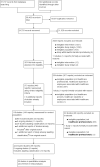
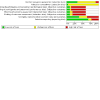
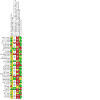
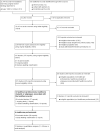
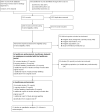




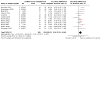
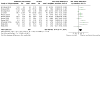



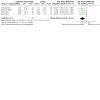
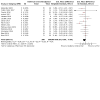

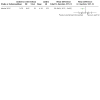
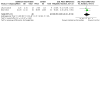
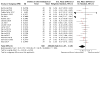
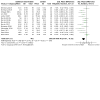
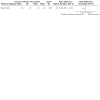

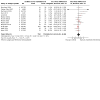
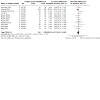
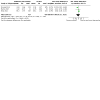
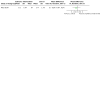
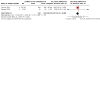
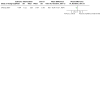
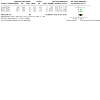
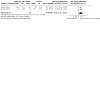
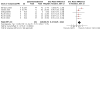
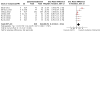
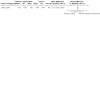
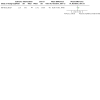
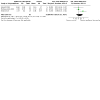
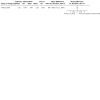
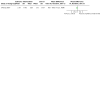
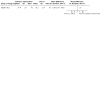
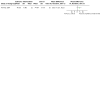
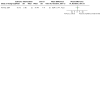

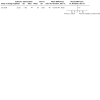
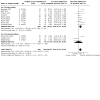
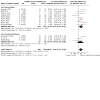
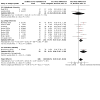
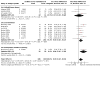
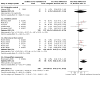
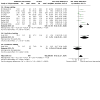
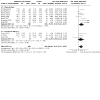
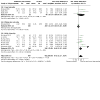
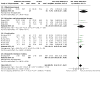
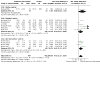
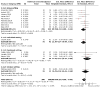
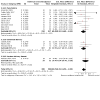

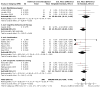
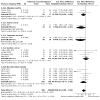
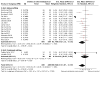
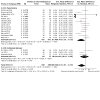
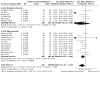

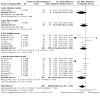
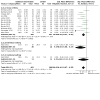
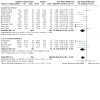
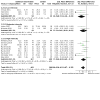
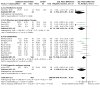
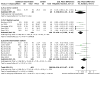
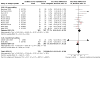
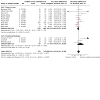

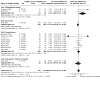
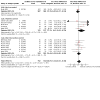
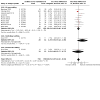
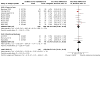
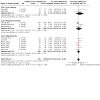

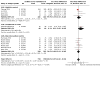
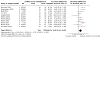
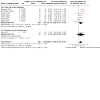
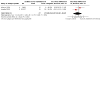
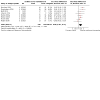
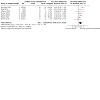
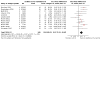
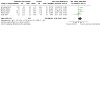
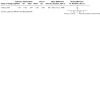
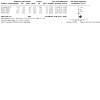
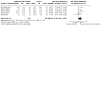
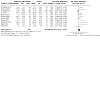
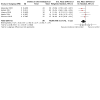
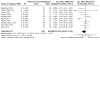
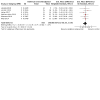
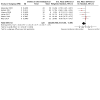
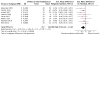
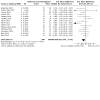
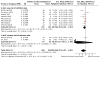
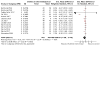
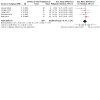
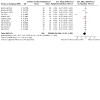
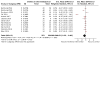
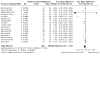
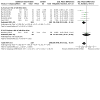
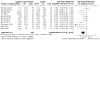

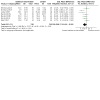

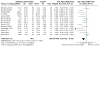
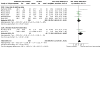
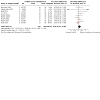
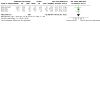
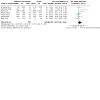
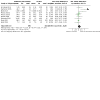
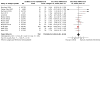
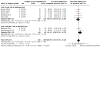

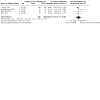

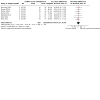
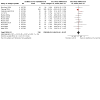
Comment in
-
Cochrane in CORR®: Psychological Interventions to Foster Resilience in Healthcare Professionals.Clin Orthop Relat Res. 2021 Jul 1;479(7):1426-1432. doi: 10.1097/CORR.0000000000001809. Clin Orthop Relat Res. 2021. PMID: 34101672 Free PMC article. No abstract available.
References
References to studies included in this review
Alexander 2015 {published data only}
Berger 2011 {published data only}
-
- Berger R, Gelkopf M. An intervention for reducing secondary traumatization and improving professional self-efficacy in well baby clinic nurses following war and terror: a random control group trial. International Journal of Nursing Studies 2011;48(5):601-10. [DOI: 10.1016/j.ijnurstu.2010.09.007] [PMID: ] - DOI - PubMed
Bernburg 2016 {published data only}
Bernburg 2019 {published data only}
Calder Calisi 2017 {published data only}
Chesak 2015 {published data only}
Cheung 2014 {published data only}
-
- Cheung YL. Psychological First Aid as a Public Health Disaster Response Preparedness Strategy for Responders in Critical Incidents and Disasters [PhD thesis]. Shatin (HK): Chinese University of Hong Kong, 2014.
Cieslak 2016 {published and unpublished data}
-
- Cieslak R, Benight CC, Rogala A, Smoktunowicz E, Kowalska M, Zukowska K, et al. Effects of internet-based self-efficacy intervention on secondary traumatic stress and secondary posttraumatic growth among health and human services professionals exposed to indirect trauma. Frontiers in Psychology 2016;7:1009. [DOI: 10.3389/fpsyg.2016.01009] [PMC4930928] [PMID: ] - DOI - PMC - PubMed
-
- Rogala A, Smoktunowicz E, Żukowska K, Kowalska M, Cieślak R. The helpers’ stress: effectiveness of a web-based intervention for professionals working with trauma survivors in reducing job burnout and improving work engagement [Stres pomagających – efektywność interwencji internetowej dla osób pracujących z ofiarami traumy w obniżaniu wypalenia zawodowego i wzmacniaunia zaangażowania w pracę]. Medycyna Pracy 2016;67(2):223-37. [DOI: 10.13075/mp.5893.00220] [PMID: ] - DOI - PubMed
Clemow 2018 {published data only}
-
- Clemow LP, Pickering TG, Davidson KW, Schwartz JE, Williams VP, Shaffer JA, et al. Stress management in the workplace for employees with hypertension: a randomized controlled trial. Translational Behavioral Medicine 2018;8(5):761-70. [DOI: 10.1093/tbm/iby018] [PMC6128963 ] [PMID: ] - DOI - PMC - PubMed
Duchemin 2015 {published and unpublished data}
-
- Duchemin AM, Steinberg BA, Marks DR, Vanover K, Klatt M. A small randomized pilot study of a workplace mindfulness-based intervention for surgical intensive care unit personnel: effects on salivary α-amylase levels. Journal of Occupational and Environmental Medicine 2015;57(4):393–9. [DOI: 10.1097/JOM.0000000000000371] [PMC4624325] [PMID: ] - DOI - PMC - PubMed
-
- Klatt M, Steinberg BA, Marks DR, Duchemin AM. Changes in physiological and psychological markers of stress in hospital personnel after a low-dose mindfulness-based worksite intervention. BMC Complementary and Alternative Medicine 2012;12(Suppl 1):O16. [DOI: 10.1186/1472-6882-12-S1-O16] [OA04.04] [PMC3373711] - DOI
Fei 2019 {published data only}
-
- Fei Y. Effects of emotional resilience training on nurses' perceived stress, positive and negative emotions and sleep quality [Efectos del entrenamiento de enfermeros en resiliencia emocional sobre el estrés percibido, las emociones positivas y negativas y la calidad del sueño]. Revista Argentina de Clínica Psicológica 2019;28(2):199-209. [DOI: 10.24205/03276716.2019.1106] - DOI
Gelkopf 2008 {published and unpublished data}
-
- Gelkopf M, Ryan P, Cotton SJ, Berger R. The impact of "training the trainers" course for helping tsunami-survivor children on Sri Lankan disaster volunteer workers. International Journal of Stress Management 2008;15(2):117-35. [DOI: 10.1037/1072-5245.15.2.117] - DOI
Hosseinnejad 2018 {published data only}
-
- Hosseinnejad F, Arsalani N, Rahgoui A, Biglarian A. Effectiveness of resiliency skills education on job satisfaction among nurses. Journal of Guilan University of Medical Sciences 2018;27(105):50-60. [No DOI available; magiran.com/p1814990]
Ireland 2017 {published data only}
ISRCTN69644721 {published data only}
-
- ISRCTN69644721. An evaluation of a new resilience intervention for emergency workers [A randomised controlled trial to evaluate a new resilience intervention for emergency workers]. www.isrctn.com/ISRCTN69644721 (first received 25 October 2016).
Khoshnazary 2016 {published data only}
-
- Khoshnazary S, Hosseini MA, Fallahi Khoshknab M, Bakhshi E. The effect of emotional intelligence (EI) training on nurses' resiliency in Department of Psychiatry. Iranian Journal of Psychiatric Nursing 2016;3(4):29-37. [ijpn.ir/article-1-683-en.pdf]
Klatt 2015 {published and unpublished data}
-
- Klatt M, Steinberg BA, Duchemin AM. Mindfulness in motion (MIM): an onsite mindfulness based intervention (MBI) for chronically high stress work environments to increase resiliency and work engagement. Journal of Visualized Experiments 2015;101:e52359. [DOI: 10.3791/52359] [PMC4545050] [PMID: ] - DOI - PMC - PubMed
Lebares 2018 {published data only}
-
- Lebares CC, Guvva EV, Delucchi KL, Kayser AS, Ascher NL, Harris HW. Mindful surgeon: a pilot feasibility and efficacy trial of mindfulness-based stress resilience training in surgery. Journal of the American College of Surgeons 2018;227(4 Suppl 2):e21. [DOI: 10.1016/j.jamcollsurg.2018.08.051] - DOI
-
- Lebares CC, Guvva EV, Olaru M, Sugrue LP, Staffaroni AM, Delucchi KL, et al. Efficacy of mindfulness-based cognitive training in surgery: additional analysis of the mindful surgeon pilot randomized clinical trial. JAMA Network Open 2019;2(5):e194108. [DOI: 10.1001/jamanetworkopen.2019.4108] [PMC6632137 ] [PMID: ] - DOI - PMC - PubMed
-
- Lebares CC, Hershberger AO, Guvva EV, Desai A, Mitchell J, Shen W, et al. Feasibility of formal mindfulness-based stress-resilience training among surgery interns: a randomized clinical trial. JAMA Surgery 2018;153(10):e182734. [DOI: 10.1001/jamasurg.2018.2734] [PMC6233792 ] [PMID: ] - DOI - PMC - PubMed
-
- NCT03141190. Mindful mental training for surgeons to enhance resilience and performance under stress [Mindfulness training to improve mental health, stress and performance in physicians]. clinicaltrials.gov/ct2/show/NCT03141190 (first received 1 May 2017).
Lin 2019 {published data only}
Loiselle 2018 {published data only}
-
- Loiselle ME. Academic Physician Burnout and Transcendental Meditation: A Mixed Methods Randomized Controlled Trial [PhD thesis]. Fairfield (IA): Maharishi University of Management, 2018.
Luthar 2017 {published and unpublished data}
Mache 2015a {published and unpublished data}
Mache 2015b {published and unpublished data}
-
- Mache S, Vitzthum K, Klapp BF, Groneberg DA. Evaluation of a multicomponent psychosocial skill training program for junior physicians in their first year at work: a pilot study. Family Medicine 2015;47(9):693-8. [PMID: ] - PubMed
Mache 2016 {published and unpublished data}
-
- Mache S, Bernburg M, Baresi L, Groneberg DA. Evaluation of self-care skills training and solution-focused counselling for health professionals in psychiatric medicine: a pilot study. International Journal of Psychiatry in Clinical Practice 2016;20(4):239-44. [DOI: 10.1080/13651501.2016.1207085] [PMID: ] - DOI - PubMed
Mache 2017 {published data only}
-
- Mache S, Baresi L, Bernburg M, Vitzthum K, Groneberg D. Being prepared to work in gynecology medicine: evaluation of an intervention to promote junior gynecologists professionalism, mental health and job satisfaction. Archives of Gynecology and Obstetrics 2017;295(1):153-62. [DOI: 10.1007/s00404-016-4223-6] [PMID: ] - DOI - PubMed
Mealer 2014 {published and unpublished data}
Medisauskaite 2019 {published data only}
Mirzaeirad 2019 {published data only}
-
- Mirzaeirad SZ, Arsalani N, Dalvandi A, Rezasoltani P, Hoseini SD. The effect of resilience skills training on nursing stress of nursing staff in hospitals of Golestan province. Journal of Health Promotion Management 2019;8(2):41-8. [hpm.ir/article-1-881-en.html]
Mistretta 2018 {published data only}
-
- Mistretta EG, Davis MC, Temkit M, Lorenz C, Darby B, Stonnington CM. Resilience training for work-related stress among health care workers: results of a randomized clinical trial comparing in-person and smartphone-delivered interventions. Journal of Occupational and Environmental Medicine 2018;60(6):559-68. [DOI: 10.1097/JOM.0000000000001285] [PMID: ] - DOI - PubMed
-
- Mistretta EG, Davis MC, Temkit M, Lorenz C, Stonnington CM. Resilience training for work-related stress among healthcare workers: results of a randomized clinical trial comparing in-person and smartphone delivered interventions. Psychosomatic Medicine 2017;79(4):A13. [DOI: 10.1097/PSY.0000000000000473] - DOI - PubMed
NCT02603133 {published data only}
-
- NCT02603133. Web-based implementation for the science of enhancing resilience study (WISER). clinicaltrials.gov/ct2/show/NCT02603133 (first received 6 November 2015).
NCT03645798 {published data only}
-
- NCT03645798. The effects of "three good things" positive psychotherapy on nurses' burnout [The effects of "three good things" positive psychotherapy on burnout, turnover intention, job performance, job satisfaction, self-efficacy, coping styles, resilience and blood cortisol of Chinese nurses]. clinicaltrials.gov/ct2/show/NCT03645798 (first received 16 August 2018).
Poulsen 2015 {published data only}
-
- Poulsen AA, Sharpley CF, Baumann KC, Henderson J, Poulsen MG. Evaluation of the effect of a 1-day interventional workshop on recovery from job stress for radiation therapists and oncology nurses: a randomised trial. Journal of Medical Imaging and Radiation Oncology 2015;59(4):491-8. [DOI: 10.1111/1754-9485.12322] [PMID: ] - DOI - PubMed
Schroeder 2016 {published data only}
-
- Schroeder DA, Stephens E, Colgan D, Hunsinger M, Rubin D, Christopher MS. A brief mindfulness-based intervention for primary care physicians: a pilot randomized controlled trial. American Journal of Lifestyle Medicine 2016;12(1):83-91. [DOI: 10.1177/1559827616629121] [PMC6125016] [PMID: ] - DOI - PMC - PubMed
Smith 2019 {published data only}
-
- NCT03017469. Achieving resilience in acute care nurses (ARISE) [Achieving resilience in acute care nurses (ARISE): a randomized controlled trial of a multi-component intervention for nurses in critical care and trauma]. clinicaltrials.gov/ct2/show/NCT03017469 (first received 9 January 2017).
-
- Smith O, Faulkner K, Skiffington A, McShane J, Wan C, Krock M. A randomized controlled trial of an intervention to enhance resilience in acute care nurses (ARISE). Critical Care Medicine 2019;47(1):35. [DOI: 10.1097/01.ccm.0000550861.59004.b7] [104] - DOI
Sood 2011 {published data only}
Sood 2014 {published data only}
Stetz 2007 {published data only (unpublished sought but not used)}
-
- Stetz M, Long CP, Wiederhold B, Turner DD. Combat scenarios and relaxation training to harden medics against stress. Journal of CyberTherapy and Rehabilitation 2008;1(3):239-46. [GALE|A225437106]
-
- Stetz MC, Long CP, Schober WV Jr, Cardillo CG, Wildzunas RM. Stress assessment and management while medics take care of the VR wounded. Annual Review of Cybertherapy and Telemedicine 2007;5:165-71. [tinyurl.com/y2lth6bj]
Strijk 2011 {published and unpublished data}
-
- Strijk JE, Proper KI, Van Mechelen W, Van der Beek AJ. Effectiveness of a worksite lifestyle intervention on vitality, work engagement, productivity, and sick leave: results of a randomized controlled trial. Scandinavian Journal of Work, Environment & Health 2013;39(1):66-75. [DOI: 10.5271/sjweh.3311] [PMID: ] - DOI - PubMed
-
- Strijk JE, Proper KI, Van der Beek AJ, Van Mechelen W. A worksite vitality intervention to improve older workers’ lifestyle and vitality-related outcomes: results of a randomised controlled trial. Journal of Epidemiology and Community Health 2012;66(11):1071-8. [DOI: 10.1136/jech-2011-200626] [PMC3465836] [PMID: ] - DOI - PMC - PubMed
Tierney 1997 {published data only}
-
- Tierney MJ, Lavelle M. An investigation into modification of personality hardiness in staff nurses. Journal of Nursing Staff Development 1997;13(4):212-7. [PMID: ] - PubMed
Varker 2012 {published data only (unpublished sought but not used)}
Villani 2013 {published and unpublished data}
West 2014 {published and unpublished data}
West 2015 {published and unpublished data}
-
- West CP, Dyrbye LN, Satele D, Shanafelt T. A randomized controlled trial evaluating the effect of COMPASS (colleagues meeting to promote and sustain satisfaction) small group sessions on physician well-being, meaning, and job satisfaction. Journal of General Internal Medicine 2015;30 Suppl 2:S89. [DOI: 10.1007/s11606-015-3271-0] - DOI
Wild 2016 {published data only (unpublished sought but not used)}
-
- Wild J. An Evaluation of Mind's Resilience Intervention for Emergency Workers; May 2016. www.mind.org.uk/media-a/4591/strand-3.pdf .
References to studies excluded from this review
Bian 2011 {published data only}
Chang 2008 {published data only}
-
- Chang RR. Critical Incident Stress Debriefing and the Effect of Timing of Intervention on First Responders: A Preliminary Study [PhD thesis]. Lincoln (NE): University of Nebraska-Lincoln, 2008.
Dyrbye 2016 {published data only}
-
- Dyrbye LN, West CP, Richards ML, Ross HJ, Satele D, Shanafelt TD. A randomized, controlled study of an online intervention to promote job satisfaction and well-being among physicians. Burnout Research 2016;3(3):69-75. [DOI: 10.1016/j.burn.2016.06.002] - DOI
-
- NCT01643694. Individualized electronic intervention to promote work engagement [Randomized controlled trial evaluating the effect of an individualized electronic intervention to promote resilience, meaning, and engagement for physicians]. clinicaltrials.gov/ct2/show/NCT01643694 (first received 27 June 2012).
Imamura 2019 {published data only}
-
- Imamura K, Tran TT, Nguyen HT, Kuribayashi K, Sakuraya A, Nguyen AQ, et al. Effects of two types of smartphone-based stress management programmes on depressive and anxiety symptoms among hospital nurses in Vietnam: a protocol for three-arm randomised controlled trial. BMJ Open 2019;9(4):e025138. [DOI: 10.1136/bmjopen-2018-025138] [PMC6500319 ] [PMID: ] - DOI - PMC - PubMed
Lahn 2014 {published data only}
-
- Lahn MJ. Indices of Heart Rate Variability and Compassion in Healthcare Professionals Following Stress Resilience Training [PhD thesis]. Oakland (CA): Saybrook University, 2014.
Maunder 2010 {published data only}
-
- Maunder RG, Lancee WJ, Mae R, Vincent L, Peladeau N, Beduz MA, et al. Computer-assisted resilience training to prepare healthcare workers for pandemic influenza: a randomized trial of the optimal dose of training. BMC Health Services Research 2010;10:72. [DOI: 10.1186/1472-6963-10-72] [PMC2851711] [PMID: ] - DOI - PMC - PubMed
NCT02417051 {published data only}
-
- NCT02417051. The efficacy of a brief resilience training program for hurricane Sandy disaster responders. clinicaltrials.gov/ct2/show/NCT02417051 (first received 10 April 2015).
NCT03753360 {published data only}
-
- NCT03753360. Online mindfulness program for stress management (IGEM) [Immunological and genomic effects of an online mindfulness program for stress management]. clinicaltrials.gov/ct2/show/NCT03753360 (first received 20 November 2018).
NCT03914898 {published data only}
-
- NCT03914898. Effect of nurse-led intervention programme professional quality of life and psychological distress in nurses [Effect of nurse-led intervention programme on compassion fatigue, burnout, compassion]. clinicaltrials.gov/show/nct03914898 (first received 8 April 2019).
Rowe 1999 {published data only}
-
- Rowe MM. Skills training in the long-term management of stress and occupational burnout. Current Psychology 2000;19(3):215–28. [DOI: 10.1007/s12144-000-1016-6] - DOI
Speckens 2019 {published data only}
-
- Speckens A, Verweij H, Van Ravesteijn H, Lagro-Janssen T. Mindfulness for medical, surgical and psychiatric residents [Mindfulness voor artsen in opleidingtot medisch specialist]. Tijdschrift voor Psychiatrie 2019;61(3):188-93. [PMID: ] - PubMed
Strauss 2018 {published data only}ISRCTN11723441
-
- Strauss C, Gu J, Pitman N, Chapman C, Kuyken W, Whittington A. Evaluation of mindfulness-based cognitive therapy for life and a cognitive behavioural therapy stress-management workshop to improve healthcare staff stress: study protocol for two randomised controlled trials. Trials 2018;19(1):209. [DOI: 10.1186/s13063-018-2547-1] [PMC5879876] [PMID: ] - DOI - PMC - PubMed
Watanabe 2019 {published data only}
-
- Watanabe N, Horikoshi M, Shinmei I, Oe Y, Narisawa T, Kumachi M, et al. Brief mindfulness-based stress management program for a better mental state in working populations - Happy Nurse Project: a randomized controlled trial. Journal of Affective Disorders 2019;251:186-94. [DOI: 10.1016/j.jad.2019.03.067] [PMID: ] - DOI - PubMed
References to studies awaiting assessment
Almén 2020 {published data only}
-
- Almén N, Lisspers J, Öst LG, Sundin Ö. Behavioral stress recovery management intervention for people with high levels of perceived stress: a randomized controlled trial. International Journal of Stress Management 2020;27(2):183–94. [DOI: 10.1037/str0000140] - DOI
Aranda Auserón 2018 {published data only}
-
- Aranda Auserón G, Elcuaz Viscarret MR, Fuertes Goñi C, Güeto Rubio V, Pascual Pascual P, Sainz de Murieta García de Galdeano E. Evaluation of the effectiveness of a mindfulness and self-compassion program to reduce stress and prevent burnout in primary care health professionals [Evaluación de la efectividad de un programa de mindfulness y autocompasión para reducir el estrés y prevenir el burnout en profesionales sanitarios de atención primaria]. Atencion Primaria 2018;50(3):141-50. [DOI: 10.1016/j.aprim.2017.03.009] [PMC6836985] [PMID: ] - DOI - PMC - PubMed
Chesak 2019a {published data only}
-
- Chesak SS, Morin KH, Cutshall S, Carlson M, Joswiak ME, Ridgeway JL, et al. Stress Management and Resiliency Training in a nurse residency program: findings from participant focus groups. Journal for Nurses in Professional Development 2019;35(6):337-43. [DOI: 10.1097/NND.0000000000000589] [PMID: ] - DOI - PubMed
Dyrbye 2019 {published data only}
-
- Dyrbye LN, Shanafelt TD, Gill PR, Satele DV, West CP. Effect of a professional coaching intervention on the well-being and distress of physicians: a pilot randomized clinical trial. JAMA Intern Med 2019;179(10):1406-14. [DOI: 10.1001/jamainternmed.2019.2425] [PMC6686971] [PMID: ] - DOI - PMC - PubMed
Grabbe 2020 {published data only}
Heath 2020 {published data only}
Kim 2018a {published data only}
-
- Kim JI, Yun JY, Park H, Park SY, Ahn Y, Lee H, et al. A mobile videoconference-based intervention on stress reduction and resilience enhancement in employees: randomized controlled trial. Journal of Medical Internet Research 2018;20(10):e10760. [DOI: 10.2196/10760] [PMC6234345] [PMID: ] - DOI - PMC - PubMed
-
- NCT03256682. The efficacy of mobile video counseling for employees with emotional labor [The efficacy of mobile video counseling targeted for stress reduction and resilience enhancement in employees with emotional labor]. clinicaltrials.gov/show/nct03256682 (first received 18 August 2017).
Mainwaring 2018 {published data only}
-
- Mainwaring J. Implementation of a mindfulness-based resilience practice for anesthesia providers. In: AANA (American Association of Nurse Anesthetists) 2018 Annual Congress; 2018 Sep 21-25; Boston (MA). 2018.
Moffatt‐Bruce 2019 {published data only}
NCT03613441 {published data only}
-
- NCT03613441. Impact of mindful awareness practices in pediatric residency training. clinicaltrials.gov/show/nct03613441 (first received 3 August 2018).
NCT03781336 {published data only}
-
- NCT03781336. Brief mindfulness meditation course to reduce stress in healthcare professionals [Brief mindfulness meditation course to reduce stress in healthcare professionals and trainees: a randomized clinical trial]. clinicaltrials.gov/ct2/show/NCT03781336 (first received 18 December 2018).
NCT04368676 {published data only}
-
- NCT04368676. Breath regulation and yogic exercise on online therapy for calm and happiness (BREATH). clinicaltrials.gov/show/nct04368676 (first received 30 April 2020).
NCT04372303 {published data only}
-
- NCT04372303. Effect of a compassion fatigue resiliency program. clinicaltrials.gov/show/nct04372303 (first received 4 May 2020).
NCT04373382 {published data only}
-
- NCT04373382. Peer champion support for hospital staff during and after the COVID-19 pandemic. clinicaltrials.gov/show/nct04373382 (first received 4 May 2020).
NCT04384861 {published data only}
-
- NCT04384861. Improving physician empathy, compassionate care and wellness. clinicaltrials.gov/show/nct04384861 (first received 12 May 2020).
Ouyang 2017 {published data only}
-
- Ouyang M, Yu Z, Hao Y. Effect of professional training combined with positive psychological intervention for reducing mental crisis of primary nurses [专业培训联合积极心理学干预减轻初责护士心理危机的效果]. Huli Yanjiu (Chinese Nursing Research) 2017;31(21):2585-8. [DOI: 10.3969/j.issn.1009-6493.2017.21.008] - DOI
Rodgers 2018 {published data only}
-
- Rodgers RK. Mental and emotional self-management: an examination of psychological and physiological outcomes [PhD thesis]. Claremont (CA): Claremont Graduate University, 2018.
Ruehl 2013 {published data only}
-
- Ruehl BD. The Psychological and Physical Health Effects of Written Emotional Expression in Pediatric Hematology/Oncology, Intensive Care, and Neonatal Intensive Care Nursing Staff [PhD thesis]. San Diego (CA): Alliant International University, 2013.
Van Berkel 2014 {published data only}
-
- Van Berkel J, Boot CR, Proper KI, Bongers PM, Van der Beek AJ. Effectiveness of a worksite mindfulness-based multi-component intervention on lifestyle behaviors. International Journal of Behavioral Nutrition and Physical Activity 2014;11:9. [DOI: 10.1186/1479-5868-11-9] [PMC3905927] [PMID: ] - DOI - PMC - PubMed
-
- Van Berkel J, Boot CR, Proper KI, Bongers PM, Van der Beek AJ. Effectiveness of a worksite mindfulness-related multi-component health promotion intervention on work engagement and mental health: results of a randomized controlled trial. PLoS ONE 2014;9(1):e84118. [DOI: 10.1371/journal.pone.0084118] [PMC3904825] [PMID: ] - DOI - PMC - PubMed
Yeo 2019 {published data only}
-
- Yeo, CJJ, Barbieri A, Roman G, Wiesman J, Powell S. Using smartphone mindfulness apps to increase trainee resilience and reduce burnout. Neurology 2019;92(15 Suppl):P2.9-005. [DOI: No DOI available] [https://n.neurology.org/content/92/15_Supplement/P2.9-005.abstract]
References to ongoing studies
ACTRN12617000290392 {published data only}
-
- ACTRN12617000290392. Doctors Working Well: a study evaluating an online stress management program for doctors [A randomised controlled trial of an online intervention on resiliency, occupational stress, and burnout among junior medical doctors]. www.anzctr.org.au/Trial/Registration/TrialReview.aspx?id=372318 (first received 24 February 2017).
JPRN UMIN000031435 {published data only}
-
- JPRN-UMIN000031435. Mindfulness for health professionals building resilience and compassion (MHALO program) - randomized control trial. who.int/trialsearch/Trial2.aspx?TrialID=JPRN-UMIN000031435 (first received 23 February 2018).
NCT03518359 {published data only}
-
- NCT03518359. Enhanced stress resilience training for residents (ESRT-R) [Enhanced resilience training to improve mental health, stress and performance in resident physicians]. clinicaltrials.gov/ct2/show/NCT03518359 (first received 24 April 2018).
NCT03645512 {published data only}
-
- NCT03645512. Resilience intervention for critical care nurses [A randomized controlled trial of a resilience intervention for critical care nurses]. clinicaltrials.gov/ct2/show/NCT03645512 (first received 21 August 2018).
NCT03759795 {published data only}
-
- NCT03759795. Bournemouth University Resilience Training for Surgeons (BURTS) [Ameliorating the impact of complications and errors on surgeons: resilience training for surgeons]. clinicaltrials.gov/ct2/show/NCT03759795 (first received 13 November 2018).
Additional references
Abbott 2009
-
- Abbott J-A, Klein B, Hamilton C, Rosenthal A. The impact of online resilience training for sales managers on wellbeing and performance. E-Journal of Applied Psychology 2009;5(1):89-95. [DOI: 10.7790/ejap.v5i1.145] - DOI
Abel 2002a
-
- Abel MH. Humor, stress, and coping strategies. Humor: International Journal of Humor Research 2002;15(4):365–81. [DOI: 10.1515/humr.15.4.365] - DOI
Abel 2002b
-
- Abel MH, Maxwell D. Humor and effective consequences of a stressful task. Journal of Social and Clinical Psychology 2002;21(2):165-90. [DOI: 10.1521/jscp.21.2.165.22516] - DOI
Abidin 1990
-
- Abidin RR. Parenting Stress Index (PSI). Charlottesville (VA): Pediatric Psychology Press, 1990.
Adams 2006
Adriaenssens 2011
Adriaenssens 2015
Ahern 2004
Ahmad 2010
Aiken 2001
Al‐Yagon 2009
-
- Al-Yagon M, Margalit M. Positive and negative affect among mothers of children with intellectual disabilities. British Journal of Developmental Disabilities 2009;55(109):109-27. [DOI: 10.1179/096979509799103070] - DOI
Alessandri 2007
-
- Alessandri G, Vecchio GM, Steca P, Caprara MG, Caprara GV. A revised version of Kremen and Block's Ego Resiliency Scale in an Italian sample. TPM-Testing, Psychometrics, Methodology in Applied Psychology 2007;14(3-4):165-83. [www.tpmap.org/wp-content/uploads/2014/11/14.3.4.pdf]
Alexander 2001
Alexander 2019 [pers comm]
-
- Alexander G. Potential withdrawals/exclusions in the study and number of participants analysed [personal communication]. Email to: A Kunzler 5 September 2019.
Alim 2008
Allart 2013
Allen 2010
Anderson 2017
Andresen 1994
-
- Andresen EM, Malmgren JA, Carter WB, Patrick DL. Screening for depression in well older adults: evaluation of a short form of the CES-D (Center for Epidemiologic Studies Depression Scale). American Journal of Preventive Medicine 1994;10(2):77-84. [PMID: ] - PubMed
Andrew 2008
-
- Andrew ME, McCanlies EC, Burchfiel CM, Charles LE, Hartley TA, Fekedulegn D, et al. Hardiness and psychological distress in a cohort of police officers. International Journal of Emergency Mental Health 2008;10(2):137-47. [PMID: ] - PubMed
Aniţei 2012
-
- Aniţei M, Chraif M, Chiriac G. Resilience to stress evidence-based improvements in integrative psychotherapy working groups. Procedia - Social and Behavioral Sciences 2012;33:1042-6. [DOI: 10.1016/j.sbspro.2012.01.281] - DOI
Ano 2005
Antonovsky 1979
-
- Antonovsky A. Health, Stress and Coping: New Perspectives on Mental and Physical Well-being. San Francisco (CA): Jossey-Bass, 1979.
Antonovsky 1987
-
- Antonovsky A. Unraveling the mystery of health: how people manage stress and stay well. San Francisco: Jossey-Bass, 1997.
Arnetz 1985
Atal 2016
Atri 2007a
-
- Atri A. Role of Social Support, Hardiness and Acculturation as Predictors of Mental Health Among the International Students of Asian Indian Origin in Ohio [MS thesis]. Cincinnati (OH): University of Cincinnati, 2007. - PubMed
Atri 2007b
Bailey 2013
-
- Bailey A, Sharma M, Jubin M. The mediating role of social support, cognitive appraisal, and quality health care in black mothers' stress-resilience process following loss to gun violence. Violence and Victims 2013;28(2):233-47. [PMID: ] - PubMed
Bakker 2005
Bakker 2007
-
- Bakker AB, Demerouti E. The Job Demands-Resources model: state of the art. Journal of Managerial Psychology 2007;22(3):309–28. [DOI: 10.1108/02683940710733115] - DOI
Balduzzi 2019
Bamberger 1999
-
- Bamberger GG. Lösungsorientierte Beratung. Weinheim (DE): Beltz, 1999.
Bandura 1997
-
- Bandura A. Self-Efficacy: The Exercise of Control. New York (NY): WH Freeman & Company, 1997.
Barry 2003
Bartone 1989
-
- Bartone PT, Ursano RJ, Wright KM, Ingraham LH. The impact of a military air disaster on the health of assistance workers: a prospective study. Journal of Nervous and Mental Disease 1989;177(6):317-28. [PMID: ] - PubMed
Bauer 2018
-
- Bauer A, Newbury-Birch D, Robalino S, Ferguson J, Wigham S. Is prevention better than cure? A systematic review of the effectiveness of well-being interventions for military personnel adjusting to civilian life. PLoS ONE 2018;13(5):e0190144. [DOI: 10.1371/journal.pone.0190144] [PMC5931793] [PROSPERO registration number: CRD42015026341.] [PMID: ] - DOI - PMC - PubMed
Bauer‐Wu 2005
Bech 2003
-
- Bech P, Olsen LR, Kjoller M, Rasmussen NK. Measuring well-being rather than the absence of distress symptoms: a comparison of the SF-36 Mental Health subscale and the WHO-Five Well-Being Scale. International Journal of Methods in Psychiatric Research 2003;12(2):85-91. [DOI: 10.1002/mpr.145] [PMC6878541] [PMID: ] - DOI - PMC - PubMed
Beck 1961
-
- Beck AT, Ward CH, Mendelson M, Mock J, Erbaugh J. An inventory for measuring depression. Archives of General Psychiatry 1961;4(6):561-71. [PMID: ] - PubMed
Beck 1964
Beck 1972
Beck 1976
-
- Beck AT. Cognitive Therapy and the Emotional Disorders. New York (NY): International Universities Press, 1976.
Beck 1993
-
- Beck AT, Steer RA. Beck Anxiety Inventory Manual. San Antonio (TX): Psychological Corporation, 1993.
Beck 1996
-
- Beck AT, Steer RA, Brown G. Manual for the Beck Depression Inventory-II. San Antonio (TX): Psychological Corporation, 1996.
Beck 2011
-
- Beck JS. Cognitive Behavior Therapy. Basics and Beyond. Second edition. New York (NY): The Guilford Press, 2011.
Bekki 2013
-
- Bekki JM, Smith ML, Bernstein B, Harrison C. Effects of an online personal resilience training program for women in STEM doctoral programs. Journal of Women and Minorities in Science and Engineering 2013;19(1):17-35. [DOI: 10.1615/JWomenMinorScienEng.2013005351] - DOI
Bengel 2009
-
- Bengel J, Meinders-Lücking F, Rottmann N. Schutzfaktoren bei Kindern und Jugendlichen: Stand der Forschung zu Psychosozialen Schutzfaktoren für Gesundheit. Köln: BzgA, 2009.
Bengel 2012
-
- Bengel J, Lyssenko L. Resilienz und Psychologische Schutzfaktoren im Erwachsenenalter. Köln: BzgA, 2012.
Benjamin 2011
Benson 2000
-
- Benson H, Klipper MZ. The Relaxation Response. New York (NY): HarperCollins, 2000.
Berger 2007
Berk 2009
Bernas 2000
-
- Bernas KH, Major DA. Contributors to stress resistance: testing a model of women's work-family conflict. Psychology of Women Quarterly 2000;24(2):170-8. [DOI: 10.1111/j.1471-6402.2000.tb00198.x] - DOI
Besser 2014
-
- Besser A, Weinberg M, Zeigler-Hill V, Neria Y. Acute symptoms of posttraumatic stress and dissociative experiences among female Israeli civilians exposed to war: the roles of intrapersonal and interpersonal sources of resilience. Journal of Clinical Psychology 2014;70(12):1227-39. [DOI: 10.1002/jclp.22083] [PMID: ] - DOI - PubMed
Bishop 2004
-
- Bishop SR, Lau M, Shapiro S, Carlson L, Anderson ND, Carmody J, et al. Mindfulness: a proposed operational definition. Clinical Psychology: Science and Practice 2004;11(3):230-41. [DOI: 10.1093/clipsy/bph077] - DOI
Bjørkløf 2013
Blackburn 2015
Bleich 2003
Block 1996
-
- Block J, Kremen AM. IQ and ego-resiliency: conceptual and empirical connections and separateness. Journal of Personality and Social Psychology 1996;70(2):349-61. [PMID: ] - PubMed
Boellinghaus 2014
-
- Boellinghaus I, Jones FW, Hutton J. The role of mindfulness and loving-kindness meditation in cultivating self-compassion and other-focused concern in health care professionals. Mindfulness 2014;5(2):129–38. [DOI: 10.1007/s12671-012-0158-6] - DOI
Bonanno 2004
Bonanno 2011
-
- Bonanno GA, Pat-Horenczyk R, Noll J. Coping flexibility and trauma: The Perceived Ability to Cope With Trauma (PACT) scale. Psychological Trauma: Theory, Research, Practice, and Policy 2011;3(2):117-29. [DOI: 10.1037/a0020921] - DOI
Bonanno 2013
-
- Bonanno GA, Diminich ED. Annual Research Review: positive adjustment to adversity--trajectories of minimal-impact resilience and emergent resilience. Journal of Child Psychology and Psychiatry, and Allied Disciplines 2013;54(4):378-401. [DOI: 10.1111/jcpp.12021] [PMC3606676] [PMID: ] - DOI - PMC - PubMed
Bonanno 2015
-
- Bonanno GA, Romero SA, Klein SI. The temporal elements of psychological resilience: an integrative framework for the study of individuals, families, and communities. Psychological Inquiry 2015;26(2):139–69. [DOI: 10.1080/1047840X.2015.992677] - DOI
Bookwala 2014
Bossé 1991
Brandt 1981
-
- Brandt PA, Weinert C. The PRQ - a social support measure. Nursing Research 1981;30(5):277-80. [PMID: ] - PubMed
Broderick 2004
Bromley 2006
Brooks 2003
-
- Brooks MV. Health-related hardiness and chronic illness: a synthesis of current research. Nursing Forum 2003;38(3):11-20. [PMID: ] - PubMed
Brymer 2006
-
- Brymer M, Jacobs A, Layne C, Pynoos R, Ruzek J, Steinberg A, et al. Psychological first aid: field operations guide, 2nd edition. www.ptsd.va.gov/professional/treat/type/PFA/PFA_2ndEditionwithappendices... (accessed prior to 10 June 2019). [Available on www.ncptsd.va.gov] [Available on www.nctsn.org ]
Buddeberg‐Fischer 2006
Burton 2012
Burton 2017
Butler 2009
Caldwell 2005
Cameron 1982
-
- Cameron R, Meichenbaum D. The nature of effective coping and the treatment of stress related problems: a cognitive-behavioural perspective. In: Goldberg L, Breznitz S, editors(s). Handbook of Stress: Theoretical and Clinical Aspects. New York (NY): Free Press, 1982:695–710.
Campbell‐Sills 2007
Cann 2010
Car 2018
Carmody 2009
Carrieri 2018
-
- Carrieri D, Briscoe S, Jackson M, Mattick K, Papoutsi C, Pearson M, et al. 'Care under pressure': a realist review of interventions to tackle doctors' mental ill-health and its impacts on the clinical workforce and patient care. BMJ Open 2018;8(2):e021273. [DOI: 10.1136/bmjopen-2017-021273] - DOI - PMC - PubMed
Carver 1989
Carver 1997
Carver 2010
Casale 2013
Chaimani 2019
-
- Chaimani A, Caldwell DM, Li T, Higgins JP, Salanti G. Chapter 11: Undertaking network meta-analyses. In: Higgins JP, Thomas J, Chandler J, Cumpston M, Li T, Page MJ, Welch VA (editors). Cochrane Handbook for Systematic Reviews of Interventions version 6.0 (updated July 2019). Cochrane, 2019. Available from www.training.cochrane.org/handbook.
Chan 2013a
Chan 2013b
Chen 2004
-
- Chen G, Goddard TG, Casper WJ. Examination of the relationships among general and work-specific self-evaluations, work-related control beliefs, and job attitudes. Applied Psychology 2004;53(3):349-70. [DOI: 10.1111/j.1464-0597.2004.00175.x] - DOI
Cheng 2014
Chesak 2019b
Chesney 2003
-
- Chesney MA, Chambers DB, Taylor JM, Johnson LM, Folkman S. Coping effectiveness training for men living with HIV: results from a randomized clinical trial testing a group-based intervention. Psychosomatic Medicine 2003;65(6):1038-46. [PMID: ] - PubMed
Chmitorz 2018
-
- Chmitorz A, Kunzler A, Helmreich I, Tüscher O, Kalisch R, Kubiak T, et al. Intervention studies to foster resilience - a systematic review and proposal for a resilience framework in future intervention studies. Clinical Psychology Review 2018;59:78-100. [DOI: 10.1016/j.cpr.2017.11.002] [PMID: ] - DOI - PubMed
Cicchetti 2012
-
- Cicchetti D, Rogosch FA. Gene x environment interaction and resilience: effects of child maltreatment and serotonin, corticotropin releasing hormone, dopamine, and oxytocin genes. Development and Psychopathology 2012;24(2):411-27. [DOI: 10.1017/S0954579412000077] [PMC3684053] [PMID: ] - DOI - PMC - PubMed
Cieslak 2013
CIPSRT 2016
-
- Canadian Institute for Public Safety Research and Treatment. Peer support and crisis-focused psychological intervention programs in Canadian first responders: blue paper. www.justiceandsafety.ca/rsu_docs/blue_paper_full_web_final_production_au... (accessed 21 April 2020).
Cleary 2018
Cochran 2017
-
- Cochran C. Effectiveness and best practice of nurse residency programs: a literature review. Medsurg Nursing 2017;26(1):53-7. [PMID: ] - PubMed
Cochrane Community 2020
-
- Cochrane Community. Glossary. community.cochrane.org/glossary (accessed 22 May 2020).
Cohen 1983a
-
- Cohen S, Hoberman HM. Positive events and social supports as buffers of life change stress. Journal of Applied Social Psychology 1983;13(2):99-125. [DOI: 10.1111/j.1559-1816.1983.tb02325.x] - DOI
Cohen 1983b
Cohen 1985
-
- Cohen S, Mermelstein R, Kamarck T, Hoberman HM. Measuring the functional components of social support. In: Sarason IG, Sarason BR, editors(s). Social Support: Theory, Research and Application. Dordrecht (NL): Martinus Nijhoff, 1985:73–94. [DOI: 10.1007/978-94-009-5115-0_5] - DOI
Cohen 1988a
-
- Cohen S, Williamson G. Perceived stress in a probability sample of the United States. In: Spacapan, S, Oskamp, S, editors(s). The Social Psychology of Health. Newbury Park (CA): Sage, 1988.
Cohen 1988b
-
- Cohen J. Statistical power analysis in the behavioral sciences. 2nd edition. Hillsdale (NJ): Lawrence Erlbaum Associates, Inc., 1988.
Cohen 1992
Cohen 1994
-
- Cohen S. Perceived Stress Scale. www.mindgarden.com/documents/PerceivedStressScale.pdf (accessed 21 April 2020).
Cohen 2003
-
- Cohen O, Savaya R. Sense of coherence and adjustment to divorce among Muslim Arab citizens of Israel. European Journal of Personality 2003;17(4):309-26. [DOI: 10.1002/per.493] - DOI
Cohen 2006
Concilio 2019
-
- Concilio L, Lockhart JS, Oermann MH, Kronk R, Schreiber JB. Newly licensed nurse resiliency and interventions to promote resiliency in the first year of hire: an integrative review. Journal of Continuing Education in Nursing 2019;50(4):153-61. [DOI: 10.3928/00220124-20190319-05] - DOI
Connor 2003
Connor 2006
CRD 2009
-
- Centre for Reviews and Dissemination (CRD). Systematic Reviews: CRD's Guidance for Undertaking Reviews in Health Care. York (NYS): Univesity of York, 2009.
Cruz 2016
Cuijpers 2017
Cushway 1996
Cutrona 1987
-
- Cutrona CE, Russell DW. The provisions of social relationships and adaptation to stress. In: Jones WH, Perlman D, editors(s). Advances in Personal Relationships. Greenwich (CT): JAI Press, 1987:37-67.
Dane unpublished manuscript
-
- Dane S. Reliabilities studies of the Hardiness Testing Sale. Unpublished manuscript.
De Oliveira 2019
-
- De Oliveira SM, De Alcantara Sousa LV, Vieira Gadelha MD, Do Nascimento VB. Prevention actions of burnout syndrome in nurses: an integrating literature review. Clinical Practice and Epidemiology in Mental Health 2019;15:64-73. [DOI: 10.2174/1745017901915010064] [PMC6446475 ] [PMID: ] - DOI - PMC - PubMed
Deady 2017
-
- Deady M, Choi I, Calvo RA, Glozier N, Christensen H, Harvey SB. eHealth interventions for the prevention of depression and anxiety in the general population: a systematic review and meta-analysis. BMC Psychiatry 2017;17(1):310. [DOI: 10.1186/s12888-017-1473-1] [PMC5576307 ] [PMID: ] - DOI - PMC - PubMed
Deeks 2019
-
- Deeks JJ, Higgins JP, Altman DG (editors). Chapter 10: Analysing data and undertaking meta-analyses. In: Higgins JP, Thomas J, Chandler J, Cumpston M, Li T, Page MJ, et al (editors). Cochrane Handbook for Systematic Reviews of Interventions version 6.0 (updated July 2019). Cochrane, 2019. Available from www.training.cochrane.org/handbook. - PubMed
Dehghan 2012
-
- Dehghan Nayeri N. Principles of Nursing Management. Tehran: Boshra Publishing House, 2012.
Delgado 2017
Demerouti 2003
-
- Demerouti E, Bakker AB, Vardakou I, Kantas A. The convergent validity of two burnout instruments: a multitrait-multimethod analysis. European Journal of Psychological Assessment 2003;19(1):12–23. [DOI: 10.1027//1015- 5759.19.1.12]
Demerouti 2010
DeRoon‐Cassini 2010
Devilly 2007
Dias 2008
Dias 2015
Diener 1985
-
- Diener E, Emmons RA, Larsen RJ, Griffin S. The Satisfaction With Life Scale. Journal of Personality Assessment 1985;49(1):71-5. [PMID: ] - PubMed
Dolan 2006
-
- Dolan CA, Adler AB. Military hardiness as a buffer of psychological health on return from deployment. Military Medicine 2006;171(2):93-8. [PMID: ] - PubMed
Douglass 1983
-
- Douglass ME, Baker LD, Brooks WT. The New Time Management. Chicago (IL): Nightingale-Conant Corporation, 1983.
Downs 1998
-
- Downs SH, Black N. The feasibility of creating a checklist for the assessment of the methodological quality both of randomised and non-randomised studies of health care interventions. Journal of Epidemiology and Community Health 1998;52(6):377–84. [DOI: 10.1136/jech.52.6.377] [PMC1756728] [PMID: ] - DOI - PMC - PubMed
Duits 1997
-
- Duits AA, Boeke S, Taams MA, Passchier J, Erdman RA. Prediction of quality of life after coronary artery bypass graft surgery: a review and evaluation of multiple, recent studies. Psychosomatic Medicine 1997;59(3):257-68. [PMID: ] - PubMed
Dyrbye 2010
-
- Dyrbye LN, Power DV, Massie FS, Eacker A, Harper W, Thomas MR, et al. Factors associated with resilience to and recovery from burnout: a prospective, multi-institutional study of US medical students. Medical Education 2010;44(10):1016-26. [DOI: 10.1111/j.1365-2923.2010.03754.x] [PMID: ] - DOI - PubMed
Dörfel 2008
-
- Dörfel D, Rabe S, Karl A. Coping strategies in daily life as protective and risk factors for post traumatic stress in motor vehicle accident survivors. Journal of Loss and Trauma 2008;13(5):422-40. [DOI: 10.1080/15325020701742136] - DOI
Earvolino‐Ramirez 2007
Edwards 2003
Egger 1997
Elder 2014
Ellawala 2004
-
- Ellawala N. Discovering Freedom: A Collection of Essays. Colombo (LK): Social Scientists’ Association, 2004.
Elliott 2012
-
- Elliott KE, Scott JL, Stirling C, Martin AJ, Robinson A. Building capacity and resilience in the dementia care workforce: a systematic review of interventions targeting worker and organizational outcomes. International Psychogeriatrics 2012;24(6):882-94. [DOI: 10.1017/S1041610211002651] [PMID: ] - DOI - PubMed
Ellis 1957
-
- Ellis A. Rational psychotherapy and individual psychology. Journal of Individual Psychology 1957;13(1):38-44.
Ellis 1975
-
- Ellis A, Harper RA. A New Guide to Rational Living. Chatsworth (CA): Wilshire Book Company, 1975.
Epstein 1999
Eriksson 2006
Eschleman 2010
-
- Eschleman KJ, Bowling NA, Alarcon GM. A meta-analytic examination of hardiness. International Journal of Stress Management 2010;17(4):277-307. [DOI: 10.1037/a0020476.supp] - DOI
Farber 2000
Farber 2003
Farchi 2010
Faul 2007
Feder 2011
-
- Feder A, Charney D, Collins K. Neurobiology of resilience. In: Southwick SM, Litz BT, Charney D, Friedman MJ, editors(s). Resilience and Mental Health: Challenges Across the Lifespan. Cambridge: Cambridge University Press, 2011.
Feder 2013
Fernández‐Lansac 2012
Finnes 2019
-
- Finnes A, Ghaderi A, Dahl J, Nager A, Enebrink P. Randomized controlled trial of acceptance and commitment therapy and a workplace intervention for sickness absence due to mental disorders. Journal of Occupational Health Psychology 2019;24(1):198-212. [DOI: 10.1037/ocp0000097] [NCT01805583] [PMID: ] - DOI - PubMed
Flaxman 2013
-
- Flaxman PE, Bond FW, Livheim F. The Mindful and Effective Employee: An Acceptance and Commitment Therapy Training Manual for Improving Well-being and Performance. Oakland (CA): New Harbinger Publications, 2013.
Fletcher 2013
-
- Fletcher D, Sarkar M. Psychological resilience: a review and critique of definitions, concepts, and theory. European Psychologist 2013;18(1):12-23. [DOI: 10.1027/1016-9040/a000124] - DOI
Foa 1986
Folkman 1988
-
- Folkman S, Lazarus R. Ways of Coping Questionnaire Manual. Palo Alto (CA): Consulting Psychologists Press Inc, 1988.
Forgeard 2012
-
- Forgeard MJ, Seligman ME. Seeing the glass half full: a review of the causes and consequences of optimism. Pratiques Psychologiques 2012;18(2):107-20. [DOI: 10.1016/j.prps.2012.02.002] - DOI
Forstmeier 2009
-
- Forstmeier S, Kuwert P, Spitzer C, Freyberger HJ, Maercker A. Posttraumatic growth, social acknowledgment as survivors, and sense of coherence in former German child soldiers of World War II. American Journal of Geriatric Psychiatry 2009;17(12):1030-9. [DOI: 10.1097/JGP.0b013e3181ab8b36] [PMID: ] - DOI - PubMed
Fortney 2013
-
- Fortney L, Luchterhand C, Zakletskaia L, Zgierska A, Rakel D. Abbreviated mindfulness intervention for job satisfaction, quality of life, and compassion in primary care clinicians: a pilot study. Annals of Family Medicine 2013;11(5):412-20. [DOI: 10.1370/afm.1511] [PMC3767709] [PMID: ] - DOI - PMC - PubMed
Foster 2019
Fox 2018
Frank 1999
Fredrickson 2003
-
- Fredrickson BL, Tugade MM, Waugh CE, Larkin GR. What good are positive emotions in crises? A prospective study of resilience and emotions following the terrorist attacks on the United States on September 11th, 2001. Journal of Personality and Social Psychology 2003;84(2):365–76. [NIHMS141511] [PMC2755263] [PMID: ] - PMC - PubMed
Fresco 2006
-
- Fresco DM, Alloy LB, Reilly–Harrington N. Association of attributional style for negative and positive events and the occurrence of life events with depression and anxiety. Journal of Social and Clinical Psychology 2006;25(10):1140-60.
Friborg 2003
Friborg 2005
Friborg 2006
-
- Friborg O, Martinussen M, Rosenvinge JH. Likert-based vs semantic differential-based scorings of positive psychological constructs: a psychometric comparison of two versions of a scale measuring resilience. Personality and Individual Differences 2006;40(5):873-84. [DOI: 10.1016/j.paid.2005.08.015] - DOI
Frommberger 1999
-
- Frommberger U, Stieglitz RD, Straub S, Nyberg E, Schlickewei W, Kuner E, et al. The concept of "sense of coherence" and the development of posttraumatic stress disorder in traffic accident victims. Journal of Psychosomatic Research 1999;46(4):343-8. [DOI: 10.1016/S0022-3999(98)00117-2] - DOI - PubMed
Fujisawa [pers comm]
-
- Fujisawa D. Trial and publication status [personal communication]. Email to: A Kunzler 31 July 2019.
Fuller‐Iglesias 2008
-
- Fuller-Iglesias H, Sellars B, Antonucci TC. Resilience in old age: social relations as a protective factor. Research in Human Development 2008;5(3):181-93. [DOI: 10.1080/15427600802274043] - DOI
Fusz 2008
Galatzer‐Levy 2012
-
- Galatzer-Levy IR, Burton CL, Bonanno GA. Coping flexibility, potentially traumatic life events, and resilience: a prospective study of college student adjustment. Journal of Social and Clinical Psychology 2012;31(6):542-67. [DOI: 10.1521/jscp.2012.31.6.542] - DOI
Garnefski 2002
-
- Garnefski N, Kraaij V, Spinhoven P. CERQ: Manual for the Use of the Cognitive Emotion Regulation Questionnaire. Leiderdorp (NL): Datec, 2002.
Garnefski 2007
-
- Garnefski N, Kraaij V. The Cognitive Emotion Regulation Questionnaire. Psychometric features and prospective relationships with depression and anxiety in adults. European Journal of Psychological Assessment 2007;23(3):141–9. [DOI: 10.1027/1015-5759.23.3.141] - DOI
Gelkopf 2009
-
- Gelkopf M, Berger R. A school-based, teacher-mediated prevention program (ERASE-Stress) for reducing terror-related traumatic reactions in Israeli youth: a quasi-randomized controlled trial. Journal of Child Psychology and Psychiatry 2009;50(8):962–71. [DOI: 10.1111/j.1469-7610.2008.02021.x] [PMID: ] - DOI - PubMed
Gelkopf 2019 [pers comm]
-
- Gelkopf M. Number of mental health volunteers included in the study and summary outcome data for this subgroup [personal communication]. Email to: A Kunzler 19 March 2019.
Gelkopf unpublished manuscript
-
- Gelkopf M, Rifkind R, Berger M. The impact of a trauma-education program on medical students. Unpublished manuscript.
Geschwind 2010
Geschwind 2011
-
- Geschwind N, Peeters F, Drukker M, Van Os J, Wichers M. Mindfulness training increases momentary positive emotions and reward experience in adults vulnerable to depression: a randomized controlled trial. Journal of Consulting and Clinical Psychology 2011;79(5):618-28. [DOI: 10.1037/a0024595] [PMID: ] - DOI - PubMed
Gillman 2015
-
- Gillman L, Adams J, Kovac R, Kilcullen A, House A, Doyle C. Strategies to promote coping and resilience in oncology and palliative care nurses caring for adult patients with malignancy: a comprehensive systematic review. JBI Database of Systematic Reviews and Implementation Reports 2015;13(5):131-204. [DOI: 10.11124/jbisrir-2015-1898] [PMID: ] - DOI - PubMed
Gilmartin 2017
Gloria 2016
Gong 2014
Gracino 2016
-
- Gracino ME, Lima Zitta AL, Mangili OC, Massuda EM. Physical and mental health of medical professionals: a systematic review. Saúde em Debate 2016;40(110):244-63. [DOI: 10.1590/0103-1104201611019] - DOI
GRADEpro GDT [Computer program]
-
- McMaster University (developed by Evidence Prime) GRADEpro GDT. Hamilton (ON): McMaster University (developed by Evidence Prime), (accessed 21 April 2020).Available from: www.gradepro.org.
Graham 2001
-
- Graham J, Albery IP, Ramirez AJ, Richards MA. How hospital consultants cope with stress at work: implications for their mental health. Stress and Health 2001;17(2):85–9. [DOI: 10.1002/smi.884] - DOI
Gray 2019
-
- Gray P, Senabe S, Naicker N, Kgalamono S, Yassi A, Spiegel JM. Workplace-based organizational interventions promoting mental health and happiness among healthcare workers: a realist review. International Journal of Environmental Research and Public Health 2019;16(22):4396. [DOI: 10.3390/ijerph16224396] [PMID: ] - DOI - PMC - PubMed
Gross 1995
-
- Gross JJ, Levenson RW. Emotion elicitation using films. Cognition and Emotion 1995;9(1):87–108. [DOI: 10.1080/02699939508408966] - DOI
Grossman 2004
Grote 2007
-
- Grote NK, Bledsoe SE, Larkin J, Lemay EP Jr, Brown C. Stress exposure and depression in disadvantage women: the protective effects of optimism and perceived control. Social Work Research 2007;31(1):19-33. [DOI: 10.1093/swr/31.1.19] - DOI
Guardino 2013
Gudex 1996
Guest 2015
-
- Guest R, Craig A, Nicholson Perry K, Tran Y, Ephraums C, Hales A, et al. Resilience following spinal cord injury: a prospective controlled study investigating the influence of the provision of group cognitive behavior therapy during inpatient rehabilitation. Rehabilitation Psychology 2015;60(4):311-21. [DOI: 10.1037/rep0000052] [PMID: ] - DOI - PubMed
Guillaumie 2017
Guvva 2019 [pers comm]
-
- Guvva K. Information if trial was still ongoing [personal communication]. Email to: A Kunzler 21 August 2019.
Guyatt 2011a
Guyatt 2011b
Guyatt 2011c
Guyatt 2011d
Guyatt 2011e
Haglund 2007
Hahn 2011
Hannigan 2004
-
- Hannigan B, Edwards D, Burnard P. Stress and stress management in clinical psychology: findings from a systematic review. Journal of Mental Health 2004;13(3):235-45. [10.1080/09638230410001700871]
Harris 2018
-
- Harris M, Thomas G, Thomas M, Cafarella P, Stocks A, Greig J, et al. Supporting wellbeing in motor neurone disease for patients, carers, social networks, and health professionals: a scoping review and synthesis. Palliative & Supportive Care 2018;16(2):228-37. [DOI: 10.1017/S1478951517000700] [PMID: ] - DOI - PubMed
Hart 2014
Hartley 2008
-
- Hartley SM, Vance DE, Elliott TR, Cuckler JM, Berry JW. Hope, self-efficacy, and functional recovery after knee and hip replacement surgery. Rehabilitation Psychology 2008;53(4):521-9. [DOI: 10.1037/a0013121] - DOI
Harvey 2003
-
- Harvey MR, Liang B, Harney PA, Koenen K, Tummala-Narra P, Lebowitz L. A multidimensional approach to the assessment of trauma impact, recovery and resiliency. Journal of Aggression, Maltreatment & Trauma 2003;6(2):87-109. [DOI: 10.1300/J146v06n02_05] - DOI
Harvey 2009
-
- Harvey SB, Laird B, Henderson M, Hotopf M. The Mental Health of Health Care Professionals. A Review for the Department of Health. London (LO): King’s College London, 2009.
Harvey 2017
-
- Harvey SB, Modini M, Joyce S, Milligan-Saville JS, Tan L, Mykletun A, et al. Can work make you mentally ill? A systematic meta-review of work-related risk factors for common mental health problems. Occupational and Environmental Medicine 2017;74(4):301–10. [DOI: 10.1136/oemed-2016-104015] [PMID: ] - DOI - PubMed
Hasson 2005
-
- Hasson D, Arnetz BB. Validation and findings comparing VAS vs. Likert scales for psychosocial measurements. International Electronic Journal Health Education 2005;8:178–92.
Hayes 2004
-
- Hayes SC, Follette VM, Linehan MM. Mindfulness and Acceptance. Expanding the Cognitive-Behavioral Tradition. New York (NY): The Guilford Press, 2004.
Hayes 2006
Hayter 2014
He 2008
-
- He S, Zhang B, Bai L. Introduction of MMSS scale. Chinese Nursing Research 2008;22:1063. [DOI: 10.3969/j.issn.1009-6493.2008.12.045] - DOI
Heber 2017
Hebert 2007
-
- Hebert RS, Dang Q, Schulz R. Religious beliefs and practices are associated with better mental health in family caregivers of patients with dementia: findings from the REACH study. American Journal of Geriatric Psychiatry 2007;15(4):292-300. [DOI: 10.1097/01.JGP.0000247160.11769.ab] [PMID: ] - DOI - PubMed
Heinen 2013
-
- Heinen MM, Van Achterberg T, Schwendimann R, Zander B, Matthews A, Kózka M, et al. Nurses' intention to leave their profession: a cross sectional observational study in 10 European countries. International Journal of Nursing Studies 2013;50(2):174-84. [DOI: 10.1016/j.ijnurstu.2012.09.019] [PMID: ] - DOI - PubMed
Helgeson 2006
Henderson 2007
-
- Henderson N, Bonnie B. Resiliency in Action: Practical Ideas for Overcoming Risks and Building Strengths in Youth, Families & Communities. Washington DC: Public Library, 2007.
Hernandez 2013
Heron 2010
Higgins 2011a
Higgins 2011b
-
- Higgins JP, Altman DG, Sterne JA (editors). Chapter 8: Assessing risk of bias in included studies. In: Higgins JP, Green S (editors). Cochrane Handbook for Systematic Reviews of Interventions Version 5.1.0 (updated March 2011). The Cochrane Collaboration, 2011. Available from www.cochrane-handbook.org.
Higgins 2019a
-
- Higgins JPT, Li T, Deeks JJ (editors). Chapter 6: Choosing effect measures and computing estimates of effect. In: Higgins JPT, Thomas J, Chandler J, Cumpston M, Li T, Page MJ, et al (editors). Cochrane Handbook for Systematic Reviews of Interventions version 6.0 (updated July 2019). Cochrane, 2019. Available from www.training.cochrane.org/handbook.
Higgins 2019b
-
- Higgins JP, Eldridge S, Li T (editors). Chapter 23: Including variants on randomized trials. In: Higgins JP, Thomas J, Chandler J, Cumpston M, Li T, Page MJ, et al (editors). Cochrane Handbook for Systematic Reviews of Interventions version 6.0 (updated July 2019). Cochrane, 2019. Available from www.training.cochrane.org/handbook.
Hjemdal 2001
-
- Hjemdal O, Friborg O, Martinussen M, Rosenvinge JH. Preliminary results from the development and validation of a Norwegian scale for measuring adult resilience [Mestring og psykologisk motstandsdyktighet hos voksne: utvikling og foreløpig validering av et nytt instrument]. Tidsskrift for Norsk Psykologforening 2001;38:310-7.
Ho 2010
Horsfall 2014
-
- Horsfall S. Doctors Who Commit Suicide While Under GMC Fitness to Practise Investigation. London (LO): General Medical Council, 2014.
Hu 2015
-
- Hu T, Zhang D, Wang J. A meta-analysis of the trait resilience and mental health. Personality and Individual Differences 2015;76:18-27. [DOI: 10.1016/j.paid.2014.11.039] - DOI
Huang 2003
-
- Huang L, Yang T, Li Z. Applicability of the Positive and Negative Affect Scale in Chinese. Chinese Mental Health Journal 2003;17(1):54-6. [DOI: 10.3321/j.issn:1000-6729.2003.01.018] - DOI
Huey 1997
Huggard 2016
Hultcrantz 2017
Hunter 2016
-
- Hunter L. Making time and space: the impact of mindfulness training on nursing and midwifery practice. A critical interpretative synthesis. Journal of Clinical Nursing 2016;25(7-8):918-29. [DOI: 10.1111/ jocn.13164] [PMID: ] - PubMed
Hurtes 2001
-
- Hurtes KP, Allen LR. Measuring resiliency in youth: the Resiliency Attitudes and Skills Profile. Therapeutic Recreation Journal 2001;35(4):333-47.
Hystad 2011
Hölzel 2011
Iacoviello 2014
Ireland 2019 [pers comm]
-
- Ireland M. Potential withdrawals/exclusions in the two groups and number of participants analysed in each group [personal communication]. Email to: A Kunzler 5 September 2019.
Irwin 2019 [pers comm]
-
- Irwin M. Trial and publication status [personal communication]. Email to: A Kunzler 31 July 2019.
Jackson 2007
Jackson 2014
Jacobson 1938
-
- Jacobson E. Progressive Relaxation: A Physiological and Clinical Investigation of Muscular States and their Significance in Psychology and Medical Practice. Chicago (IL): University of Chicago Press, 1938.
Jennings 2008
-
- Jennings BM. Chapter 26. Work stress and burnout among nurses: role of the work environment and working conditions. In: Hughes RG, editors(s). Patient Safety and Quality: An Evidence-Based Handbook for Nurses. Rockville (MD): Agency for Healthcare Research and Quality (US), 2008. - PubMed
Jennings 2013
-
- Jennings PA, Frank JL, Snowberg KE, Coccia MA, Greenberg MT. Improving classroom learning environments by Cultivating Awareness and Resilience in Education (CARE): results of a randomized controlled trial. School Psychology Quarterly 2013;28(4):374-90. [DOI: 10.1037/spq0000035] [PMID: ] - DOI - PubMed
Jha 2010
Johnson 2009
-
- Johnson RJ, Canetti D, Palmieri PA, Galea S, Varley J, Hobfoll SE. A prospective study of risk and resilience factors associated with posttraumatic stress symptoms and depression symptoms among Jews and Arabs exposed to repeated acts of terrorism in Israel. Psychological Trauma: Theory, Research, Practice, and Policy 2009;1(4):291-311. [DOI: 10.1037/a0017586] - DOI
Johnson 2010
Johnson 2014
-
- Johnson DC, Thom NJ, Stanley EA, Haase L, Simmons AN, Shih P-AB, et al. Modifying resilience mechanisms in at-risk individuals: a controlled study of mindfulness training in marines preparing for deployment. American Journal of Psychiatry 2014;171(8):844-53. [DOI: 10.1176/appi.ajp.2014.13040502] [PMC4458258] [PMID: ] - DOI - PMC - PubMed
Johnson 2015
Johnston 2015
Jones 2000
Jonsson 2003
Joyce 2018
Judkins 2005
-
- Judkins S, Rind R. Hardiness, job satisfaction, and stress among home health nurses. Home Health Care Management & Practice 2005;17(2):113-8. [DOI: 10.1177/10848223042700201] - DOI
Kabat‐Zinn 1982
Kabat‐Zinn 1990
-
- Kabat-Zinn J. Full Catastrophe Living: Using the Wisdom of your Body and Mind to Face Stress. New York (NY): Delacourte Press, 1990.
Kabat‐Zinn 2013
-
- Kabat-Zinn J. Full Catastrophe Living: Using the Wisdom of Your Body and Mind to Face Stress, Pain, and Illness. New York, NY: Bantam Books, 2013.
Kalisch 2015
Kalisch 2017
Karstoft 2015
Kasen 2014
Kaspersen 2003
Kawakami 2019 [pers comm]
-
- Kawakami N. Potential focus on and measurement of resilience in the study Imamura 2019 [personal communication]. Email to: A Kunzler 7 August 2019.
Kent 2011
Kent 2014
-
- Kent M, Davis MC, Reich JW. The Resilience Handbook: Approaches to Stress and Trauma. New York: Routledge, 2014.
Kilic 2013
Kim 2008
-
- Kim JS. Examining the effectiveness of solution-focused brief therapy: a meta-analysis. Research on Social Work Practice 2008;18(2):107-16. [DOI: 10.1177/1049731507307807] - DOI
Kim 2018b
King 1998
-
- King LA, King DW, Fairbank JA, Keane TM, Adams GA. Resilience-recovery factors in post-traumatic stress disorder among female and male Vietnam veterans: hardiness, postwar social support, and additional stressful life events. Journal of Personality and Social Psychology 1998;74(2):420-34. [PMID: ] - PubMed
Kivimäki 2005
Klatt 2009
Klatt 2018 [pers comm]
-
- Klatt M. Descriptive statistics (means and SDs) for the outcomes perceived stress, DASS-21 stress, work stress, salivary alpha-amylase and work satisfaction for two groups at pre- and post-intervention [personal communication]. Email to: A Kunzler 28 June 2018.
Klatt 2019 [pers comm]
-
- Klatt M. Number of participants analysed in each group [personal communication]. Email to: A Kunzler 22 February 2019.
Klohnen 1996
-
- Klohnen EC. Conceptual analysis and measurement of the construct of ego-resiliency. Journal of Personality and Social Psychology 1996;70(5):1067-79. [PMID: ] - PubMed
Kneebone 2003
Koenen 2003
Koenig 2007
Kok 2017
Korpershoek 2011
Krahn 2013
Krahn 2014
Kram 1985
-
- Kram KE, Isabella LA. Mentoring alternatives: the role of peer relationships in career development. Academy of Management Journal 1985;28(1):110–32. [DOI: 10.2307/256064] - DOI
Krasner 2009
Krause 2007
Kristensen 2005a
Kristensen 2005b
-
- Kristensen TS, Borritz M, Villadsen E, Christensen KB. The Copenhagen Burnout Inventory: a new tool for the assessment of burnout. Work and Stress 2005;19(3):192–207. [DOI: 10.1080/02678370500297720] - DOI
Kroenke 2001
Kuburović 2016
-
- Kuburović NB, Dedić V, Djuricić S, Kuburović V. Determinants of job satisfaction of healthcare professionals in public hospitals in Belgrade, Serbia--cross-sectional analysis. Srpski Arhiv za Celokupno Lekarstvo 2016;144(3-4):165-73. [PMID: ] - PubMed
Kuehner 2017
Kuiper 1992
-
- Kuiper NA, Martin RA, Dance KA. Sense of humour and enhanced quality of life. Personality and Individual Differences 1992;13(12):1273-83. [DOI: 10.1016/0191-8869(92)90169-P] - DOI
Kuiper 2012
-
- Kuiper NA. Humor and resiliency: towards a process model of coping and growth. Europe’s Journal of Psychology 2012;8(3):475-91. [DOI: 10.5964/ejop.v8i3.464] - DOI
Kumar 2016
Kunzer unpublished
Kunzler 2018
Kvillemo 2014
König 2013
Kübler‐Ross 1997
-
- Kübler-Ross E. On Death and Dying. New York (NY): Scribner Classics, 1997.
Lagerveld 2012
Lambert 2004
-
- Lambert VA, Lambert CE, Itano J, Inouye J, Kim S, Kuniviktikul W, et al. Cross-cultural comparison of workplace stressors, ways of coping and demographic characteristics as predictors of physical and mental health among hospital nurses in Japan, Thailand, South Korea and the USA (Hawaii). International Journal of Nursing Studies 2004;41(6):671-84. [DOI: 10.1016/j.ijnurstu.2004.02.003] [PMID: ] - DOI - PubMed
Lamothe 2016
-
- Lamothe M, Rondeau É, Malboeuf-Hurtubise C, Duval M, Sultan S. Outcomes of MBSR or MBSR-based interventions in health care providers: a systematic review with a focus on empathy and emotional competencies. Complementary Therapies in Medicine 2016;24:19–28. [DOI: 10.1016/j.ctim.2015.11.001] [PMID: ] - DOI - PubMed
Landy 1991
-
- Landy FJ, Rastegary H, Thayer J, Colvin C. Time urgency: the construct and its measurement. Journal of Applied Psychology 1991;76(5):644-57. [PMID: ] - PubMed
Lappalainen 2007
Lateef 2011
Lavin Venegas 2019
Lawler 1992
Lazarus 1987
-
- Lazarus RS, Folkman S. Transactional theory and research on emotions and coping. European Journal of Personality 1987;1(3):141-69. [DOI: 10.1002/per.2410010304] - DOI
Lebares 2019 [pers comm]
-
- Lebares C. Information about time points and number of participants analysed for psychological outcomes [personal communication]. Email to: A Kunzler 30 August 2019.
Lechner 2007
Lee 2013
-
- Lee JH, Nam SK, Kim AR, Kim B, Lee MY, Lee SM. Resilience: a meta-analytic approach. Journal of Counseling and Development 2013;91(3):269-79. [DOI: 10.1002/j.1556-6676.2013.00095.x] - DOI
Lefebvre 2019
-
- Lefebvre C, Glanville J, Briscoe S, Littlewood A, Marshall C, Metzendorf M-I, et al. Chapter 4: Searching for and selecting studies. In: Higgins JP, Thomas J, Chandler J, Cumpston M, Li T, Page MJ, et al (editors). Cochrane Handbook for Systematic Reviews of Interventions version 6.0 (updated July 2019). Cochrane, 2019. Available from www.training.cochrane.org/handbook.
Leonelli 2017
Leppin 2014
-
- Leppin AL, Bora PR, Tilburt JC, Gionfriddo MR, Zeballos-Palacios C, Dulohery MM, et al. The efficacy of resiliency training programs: a systematic review and meta-analysis of randomized trials. PLoS ONE 2014;9(10):e111420. [DOI: 10.1371/journal.pone.0111420] [PMC4210242 ] [PROSPERO #CRD42014007185] [PMID: ] - DOI - PMC - PubMed
Levenstein 1993
Li 2003
-
- Li C, Shi-Kan. The influence of distributive justice and procedural justice on job burnout [分配公平与程序公平对工作倦怠的影响]. Acta Psychologica Sinica 2003;35(5):677–84. [journal.psych.ac.cn/xlxb/EN/Y2003/V35/I05/677#1]
Li 2011
Li 2017
Li 2019
-
- Li T, Higgins JP, Deeks JJ (editors). Chapter 5: Collecting data. In: Higgins JP, Thomas J, Chandler J, Cumpston M, Li T, Page MJ, et al (editors). Cochrane Handbook for Systematic Reviews of Interventions version 6.0 (updated July 2019). Cochrane, 2019. Available from www.training.cochrane.org/handbook.
Liebenberg 2012
-
- Liebenberg L, Ungar M, Van de Vijver F. Validation of the Child and Youth Resilience Measure-28 (CYRM-28) among Canadian youth. Research on Social Work Practice 2012;22(2):219-26. [DOI: 10.1177/1049731511428619] - DOI
Liebenberg 2013
Linde 2016
Locke 2007
-
- Locke DE, Decker PA, Sloan JA, Brown PD, Malec JF, Clark MM, et al. Validation of single-item linear analog scale assessment of quality of life in neuro-oncology patients. Journal of Pain and Symptom Management 2007;34(6):628-38. [DOI: 10.1016/j.jpainsymman.2007.01.016] [PMC2732111] [PMID: ] - DOI - PMC - PubMed
Loprinzi 2011
-
- Loprinzi CE, Prasad K, Schroeder DR, Sood A. Stress Management and Resilience Training (SMART) program to decrease stress and enhance resilience among breast cancer survivors: a pilot randomized clinical trial. Clinical Breast Cancer 2011;11(6):364-8. [DOI: 10.1016/j.clbc.2011.06.008] [PMID: ] - DOI - PubMed
Lovibond 1995
-
- Lovibond SH, Lovibond PF. Manual for the Depression Anxiety Stress Scales. 2nd edition. Sydney (NSW): School of Psychology, University of New South Wales, 1995.
Lu 2006
-
- Lu G, Ades AE. Assessing evidence inconsistency in mixed treatment comparisons. Journal of the American Statistical Association 2006;101(474):447-59. [DOI: 10.1198/016214505000001302] - DOI
Lu 2016
Lua 2008
-
- Lua HJ. The Mediating Role of Work Stress and Burnout Management Self-Efficacy in the Job Demand–Resources Model [Master's thesis]. Warsaw: SWPS University of Social Sciences and Humanities, 2008.
Lumley 2002
Luo 2015
-
- Luo T, Cheng X, Xiong Y. Relationship among resilience, coping style and mental health of newly recruited workers born after 1990 in manufacturing industry of Shenzhen City. Journal of Hygiene Research 2015;44(2):252-6. [PMID: ] - PubMed
Luszczynska 2009
-
- Luszczynska A, Benight CC, Cieslak R. Self-efficacy and health-related outcomes of collective trauma. European Psychologist 2009;14(1):51-62. [DOI: 10.1027/1016-9040.14.1.51] - DOI
Luthar 2000a
Luthar 2000b
Luthar 2007
Luthar 2015
Luthar 2017a
Lyon 2001
-
- Lyon DE, Younger JB. Purpose in life and depressive symptoms in persons living with HIV disease. Journal of Nursing Scholarship 2001;33(2):129-33. [PMID: ] - PubMed
Lyubomirsky 1999
-
- Lyubomirsky S, Leppern HS. A measure of subjective happiness: preliminary reliability and construct validation. Social Indicators Research 1999;46(2):137-55. [DOI: 10.1023/A:1006824100041] - DOI
Maben 2018
Macedo 2014
Mache 2017a [pers comm]
-
- Mache S. Number of participants randomised and potential per-protocol analysis; form of control group [personal communication]. Email to: A Kunzler 21 September 2017.
Mache 2017b [pers comm]
-
- Mache S. Number of participants randomised and potential per-protocol analysis [personal communication]. Email to: A Kunzler 21 September 2017.
Mache 2018 [pers comm]
-
- Mache S. Number of participants randomised and potential per-protocol analysis [personal communication]. Email to: A Kunzler 22 July 2018.
Mache 2019a [pers comm]
-
- Mache S. Correct that performed per-protocol analysis with n = 44 in IG and n = 42 in CG [personal communication]. Email to: A Kunzler 4 September 2019.
Mache 2019b [pers comm]
-
- Mache S. Correct that available case analysis with participants for whom outcomes were obtained at follow-up assessments [personal communication]. Email to: A Kunzler 4 September 2019.
Machin 1997
-
- Machin D, Campbell M, Fayers P, Pinol A. Sample Size Tables for Clinical Studies. 2nd edition. Malden, MA: Blackwell Science, 1997.
Maddi 1987
-
- Maddi SR. Hardiness training at Illinois Bell Telephone. In: Opatz J, editors(s). Health Promotion Evaluation. Stephens Point (WI): National Wellness Institute, 1987:101-15.
Maddi 1998
-
- Maddi SR, Kahn S, Maddi KL. The effectiveness of hardiness training. Consulting Psychology Journal: Practice and Research 1998;50(2):78-86. [DOI: 10.1037/1061-4087.50.2.78] - DOI
Maddi 2001
-
- Maddi SR, Khoshaba DM. HardiSurvey III-R: Test Development and Internet Instruction Manual. Irvine (CA): Hardiness Institute, 2001.
Maddi 2009
-
- Maddi SR, Harvey RH, Khoshaba DM, Fazel M, Resurreccion N. Hardiness training facilitates performance in college. Journal of Positive Psychology 2009;4(6):566-77. [DOI: 10.1080/17439760903157133] - DOI
Madsen 2010
-
- Madsen MD, Abell N. Trauma Resilience Scale: validation of protective factors associated with adaptation following violence. Research on Social Work Practice 2010;20(2):223-33. [DOI: 10.1177/1049731509347853] - DOI
Malarkey 2013
Malouff 2007
Mancini 2009
Marchand 2015
Martin‐Krumm 2003
-
- Martin-Krumm CP, Sarrazin PG, Peterson C, Famose J-P. Explanatory style and resilience after sports failure. Personality and Individual Differences 2003;35(7):1685-95. [DOI: 10.1016/S0191-8869(02)00390-2] - DOI
Marty 2010
Maslach 1981
-
- Maslach C, Jackson SE. The measurement of experienced burnout. Journal of Organizational Behavior 1981;2(2):99–113. [DOI: 10.1002/job.4030020205] - DOI
Maslach 1986
-
- Maslach C, Jackson SE. Maslach Burnout Inventory. Palo Alto (CA): Consulting Psychologists Press, 1986.
Maslach 1996
-
- Maslach C, Jackson SE, Leiter MP. Maslach Burnout Inventory Manual. 3rd edition. Palo Alto (CA): Consulting Psychologists Press, 1996.
Maslach 1997
-
- Maslach C, Jackson SE, Leiter MP. Maslach Burnout Inventory. In: Zalaquett CP, Wood RJ, editors(s). Evaluating Stress: A Book of Resources. Lanham (MD): Scarecrow Education, 1997:191-218.
Massey 2019
Masten 2001
-
- Masten AS. Ordinary magic: resilience processes in development. Amercian Psychologist 2001;56(3):227-38. [PMID: ] - PubMed
McAllister 2009
McCann 2013
-
- McCann CM, Beddoe E, McCormick K, Huggard P, Kedge S, Adamson C, et al. Resilience in the health professions: a review of recent literature. International Journal of Wellbeing 2013;3(1):60-81. [DOI: 10.5502/ijw.v3i1.4] - DOI
McCue 1991
-
- McCue JD, Sachs CL. A stress management workshop improves residents’ coping skills. Archives of Internal Medicine 1991;151(11):2273-7. [PMID: ] - PubMed
McDonald 2013
McEwen 1998
McEwen 2003
McIntosh 2012
McLarnon 2013
-
- McLarnon MJ, Rothstein MG. Development and initial validation of the Workplace Resilience Inventory. Journal of Personnel Psychology 2013;12(2):63-73. [DOI: 10.1027/1866-5888/a000084] - DOI
McManus 2002
McVicar 2003
Mealer 2009
Mealer 2017 [pers comm]
-
- Mealer M. Descriptive statistics (means and SDs) for outcome measures in two groups at each time point [personal communication]. Email to: A Kunzler 11 September 2017.
Meichenbaum 1977
-
- Meichenbaum D. Cognitive-Behavioral Modification: An Integrative Approach. New York (NY): Plenum Press, 1977.
Meichenbaum 2007
-
- Meichenbaum D. Stress inoculation training: a preventative and treatment approach. In: Lehrer PM, Woolfolk RL, Sime WS, editors(s). Principles and Practice of Stress Management. 3rd edition. New York (NY): Guilford Press, 2007:497-518.
Meltzer 2008
Michael 2003
Michie 2003
Mills 2012
Milne 2016
Milte 2015
Mimura 2003
Min 2013
Mistretta 2018 [pers comm]
-
- Mistretta E. Information concerning potential cluster randomisation [personal communication]. Email to: A Kunzler 30 August 2018.
Moberly 2018
Moffitt 2011
-
- Moffitt TE, Arseneault L, Belsky D, Dickson N, Hancox RJ, Harrington H, et al. A gradient of childhood self-control predicts health, wealth, and public safety. Proceedings of the National Academy of Sciences of the United States of America 2011;108(7):2693-8. [DOI: 10.1073/pnas.1010076108] [PMID: ] - DOI - PMC - PubMed
Moher 2009
Mohr 2014
-
- Mohr DC, Ho J, Hart TL, Baron KG, Berendsen M, Beckner V, et al. Control condition design and implementation features in controlled trials: a meta-analysis of trials evaluating psychotherapy for depression. Translational Behavioral Medicine 2014;4(4):407-23. [DOI: 10.1007/s13142-014-0262-3] [PMC4286544] [PMID: ] - DOI - PMC - PubMed
Moran 1998
-
- Moran CC. Stress and emergency work experience: a non‐linear relationship. Disaster Prevention and Management 1998;7(1):38-46. [DOI: 10.1108/09653569810206271] - DOI
Moritz 2019
Morris 2013
Moskowitz 2009
Mueller 1990
Myhren 2010
Natvik 2011
Nazroo 1998
-
- Nazroo JY, Edwards AC, Brown GW. Gender differences in the prevalence of depression: artefact, alternative disorders, biology or roles? Sociology of Health & Illness 1998;20(3):312-30. [DOI: 10.1111/1467-9566.00104] - DOI
Netemeyer 1996
-
- Netemeyer RG, Boles JS, McMurrian R. Development and validation of work family conflict and family-work conflict scales. Journal of Applied Psychology 1996;81(4):400–10. [DOI: 10.1037/0021-9010.81.4.400] - DOI
Nezu 1988
-
- Nezu AM, Nezu CM, Blissett SE. Sense of humor as a moderator of the relation between stressful events and psychological distress: a prospective analysis. Journal of Personality and Social Psychology 1988;54(3):520-5. [PMID: ] - PubMed
Nezu 2013
-
- Nezu AM, Nezu CM, D' Zurilla TJ. Problem-Solving Therapy. A Treatment Manual. New York (NY): Springer Publishing Company, 2013.
Norris 2009
-
- Norris FH, Tracy M, Galea S. Looking for resilience: understanding the longitudinal trajectories of responses to stress. Social Science and Medicine 2009;68(12):2190-8. [PMID: ] - PubMed
Northouse 2002
Nowack 1989
-
- Nowack KM. Coping style, cognitive hardiness, and health status. Journal of Behavioral Medicine 1989;12(2):145-58. [PMID: ] - PubMed
Nowack 1990
Nowlan 2015
Nuebling 2010
-
- Nuebling M, Hasselhorn HM. The Copenhagen Psychosocial Questionnaire in Germany: from the validation of the instrument to the formation of a job-specific database of psychosocial factors at work. Scandinavian Journal of Public Health 2010;38(3 Suppl):120–4. [DOI: 10.1177/1403494809353652] [PMID: ] - DOI - PubMed
Nugent 1993
-
- Nugent WR, Thomas JW. Validation of a clinical measure of self-esteem. Research on Social Work Practice 1993;3(2):191-207.
Oettingen 2000
-
- Oettingen G, Honig G, Gollwitzer PM. Effective self-regulation of goal attainment. International Journal of Educational Research 2000;33:705–32. [www.socmot.uni-konstanz.de/sites/default/files/00_Oettingen_Hoenig_Golli...
Ong 2006
Ong 2016
-
- Ong YZ, Siddiqui S, John S, Chen Z, Chang S. The prevalence of post-traumatic stress disorder in intensive care unit staff and the common coping strategies used. Annals of the Academy of Medicine, Singapore 2016;45(5):215-8. [PMID: ] - PubMed
Orengo 2001
-
- Orengo CA, Wei SH, Molinari VA, Hale DD, Kunik ME. Functioning in rheumatoid arthritis: the role of depression and self-efficacy. Clinical Gerontologist 2001;23(3-4):45-56. [DOI: 10.1300/J018v23n03_05] - DOI
Oshio 2002
-
- Oshio A, Nakaya N, Kaneko H, Nagamine S. Development and validation of an Adolescent Resilience Scale. Japanese Journal of Counseling Science 2002;35:57-65.
Oshio 2003
-
- Oshio A, Kaneko H, Nagamine S, Nayaka M. Construct validity of the Adolescent Resilience Scale. Psychological Reports 2003;93(3 Pt 2):1217-22. [PMID: ] - PubMed
Owens 2009
Ozbay 2007
Ozer 2003
-
- Ozer EJ, Best SR, Lipsey TL, Weiss DS. Predictors of posttraumatic stress disorder and symptoms in adults: a meta-analysis. Psychological Bulletin 2003;129(1):52-73. [PMID: ] - PubMed
Pace 2012
-
- Pace R, Pluye P, Bartlett G, Macaulay AC, Salsberg J, Jagosh J, et al. Testing the reliability and efficiency of the pilot Mixed Methods Appraisal Tool (MMAT) for systematic mixed studies review. International Journal of Nursing Studies 2012;49(1):47-53. [DOI: 10.1016/j.ijnurstu.2011.07.002] [PMID: ] - DOI - PubMed
Page 2005
-
- Page K. Subjective Wellbeing in the Workplace [BA thesis]. Geelong, Victoria: Deakin University, 2005.
Page 2019
-
- Page MJ, Higgins JP, Sterne JA. Chapter 13: Assessing risk of bias due to missing results in a synthesis. In: Higgins JP, Thomas J, Chandler J, Cumpston M, Li T, Page MJ, et al (editors). Cochrane Handbook for Systematic Reviews of Interventions version 6.0 (updated July 2019). Cochrane, 2019. Available from www.training.cochrane.org/handbook.
Pallavicini 2016
Panagioti 2017
Pangallo 2015
Papadatou 2000
-
- Papadatou D. A proposed model of health professionals grieving process. Omega: Journal of Death and Dying 2000;41(1):59–77. [DOI: 10.2190/TV6M-8YNA-5DYW-3C1E] - DOI
Pargament 2000
-
- Pargament KI, Koenig HG, Perez L. The many methods of religious coping: development and initial validation of the RCOPE. Journal of Clinical Psychology 2000;56(4):519-43. [PMID: ] - PubMed
Paris 2010
Park 2008
Park 2015
-
- Park M, Chang ER, You S. Protective role of coping flexibility in PTSD and depressive symptoms following trauma. Personality and Individual Differences 2015;82:102-6. [DOI: 10.1016/j.paid.2015.03.007] - DOI
Paterson 2013
-
- Paterson C, Jones M, Rattray J, Lauder W. Exploring the relationship between coping, social support and health-related quality of life for prostate cancer survivors: a review of the literature. European Journal of Oncology Nursing 2013;17(6):750-9. [DOI: 10.1016/j.ejon.2013.04.002] [PMID: ] - DOI - PubMed
Pekurinen 2017
-
- Pekurinen V, Willman L, Virtanen M, Kivimäki M, Vahtera J, Välimäki M. Patient aggression and the wellbeing of nurses: a cross-sectional survey study in psychiatric and non-psychiatric settings. International Journal of Environmental Research and Public Health 2017;14(10):1245. [DOI: 10.3390/ijerph14101245] [PMID: ] - DOI - PMC - PubMed
Pennebaker 1986
Pesantes 2015
-
- Pesantes MA, Lazo-Porras M, Abu Dabrh AM, Ávila-Ramírez JR, Caycho M, Villamonte GY, et al. Resilience in vulnerable populations with type 2 diabetes mellitus and hypertension: a systematic review and meta-analysis. Canadian Journal of Cardiology 2015;31(9):1180-8. [DOI: 10.1016/j.cjca.2015.06.003] [PMC4556590 ] [PMID: ] - DOI - PMC - PubMed
Peter 2012
Peters 2008
Petree 2012
Petrie 2019
Petriwskyj 2016
-
- Petriwskyj A, Parker D, O'Dwyer S, Moyle W, Nucifora N. Interventions to build resilience in family caregivers of people living with dementia: a comprehensive systematic review. JBI Database of Systematic Reviews and Implementation Reports 2016;14(6):238-73. [DOI: 10.11124/JBISRIR-2016-002555] [PMID: ] - DOI - PubMed
Pezaro 2017
Piepho 2012
Piepho 2014
Pietrzak 2013
Piiparinen 2003
Pine 2007
-
- Pine R, Tart K. Return on investment: benefits and challenges of baccalaureate nurse residency program. Nursing Economics 2007;25(1):13-8. [PMID: ] - PubMed
Pisanti 2008
Pragodpol 2013
Prati 2009
-
- Prati G, Pietrantoni L. Optimism, social support, and coping strategies as factors contributing to posttraumatic growth: a meta-analysis. Journal of Loss and Trauma 2009;14(5):364-88. [DOI: 10.1080/15325020902724271] - DOI
Profit 2018 [pers comm]
-
- Profit J. Trial and publication status [personal communication]. Email to: A Kunzler 2 April 2018.
Quale 2010
R 2019 [Computer program]
-
- R Foundation for Statistical Computing R: A language and environment for statistical computing. Version 3.5.3. Vienna, Austria: R Foundation for Statistical Computing, 2019.Available at www.r-project.org.
Rabow 2001
Radloff 1977
-
- Radloff LS. The CES-D scale: a self report depression scale for research in the general population. Applied Psychological Measurement 1977;1(3):385-401. [DOI: 10.1177/014662167700100306] - DOI
Raffety 1986
Raj 2016
Ramirez 1995
Regehr 2014
Review Manager 2014 [Computer program]
-
- The Nordic Cochrane Centre, The Cochrane Collaboration Review Manager 5 (RevMan 5). Version 5.3. Copenhagen: The Nordic Cochrane Centre, The Cochrane Collaboration, 2014.
Reyes 2018
Rezaeiian 2002
-
- Rezaeiian A. Basics of Organizational Behavior Management. Tehran: Side Publishing, 2012.
Ricard 2014
-
- Ricard M, Lutz A, Davidson RJ. Mind of the meditator. Scientific American 2014;311(5):38-45. [DOI: 10.1038 /scientificamerican1114-38] [PMID: ] - PubMed
Rich unpublished manuscript
-
- Rich UL. An investigation into the modification of personality hardiness. Unpublished manuscript.
Riecher‐Rössler 2017
Riley 2017
-
- Riley KE, Park CL, Wilson A, Sabo AN, Antoni, MH, Braun TD, et al. Improving physical and mental healthin frontline mental health care providers: yoga-based stress management versus cognitive behavioral stress management. Journal of Workplace Behavioral Health Volume 2017;32(1):26–48. [DOI: 10.1080/15555240.2016.1261254] - DOI - PMC - PubMed
Robertson 2010
Robertson 2015
-
- Robertson IT, Cooper CL, Sarkar M, Curran T. Resilience training in the workplace from 2003 to 2014: a systematic review. Journal of Occupational and Organizational Psychology 2015;88(3):533-62. [DOI: 10.1111/joop.12120] - DOI
Robertson 2016
Rogala 2019 [pers comm]
-
- Rogala A. Subgroup data for health and human service professionals (physicians, nurses, first responders, social workers, psychotherapists) [personal communication]. Email to: A Kunzler 8 March 2019.
Rogers 2016
Romppanen 2017
Rose 2013
Rosenberg 1965
-
- Rosenberg M. Society and the Adolescent Self-Image. Princeton (NJ): Princeton University Press, 1965.
Ruotsalainen 2015
Rutten 2013
Ryan 2014
-
- Ryan A. ACT and be READY: Evaluation of an ACT-based Resilience Training Program Delivered to People with Diabetes [PhD thesis]. Brisbane (QLD): The University of Queensland, 2014.
Ryff 1989
-
- Ryff CD. Happiness is everything, or is it? Explorations on the meaning of psychological well-being. Journal of Personality and Social Psychology 1989;57(6):1069-81.
Rücker 2011
Rücker 2015 [Computer program]
-
- Available from: CRAN.R-project.org/package=netmeta Netmeta: network meta-analysis using frequentist methods. R package version 0.8-0. Rücker G, Schwarzer G, Krahn U, König J. Available from: CRAN.R-project.org/package=netmeta, 2015.
Sadow 1993
-
- Sadow D, Hopkins B. Resiliency training and empowerment among homeless, substance-abusing veterans: increasing a sense of self-efficacy and internal attribution of control as a result of resiliency training. Research Communications in Psychology, Psychiatry and Behavior 1993;18(3-4):121-34. [No DOI available]
Sahler 2013
-
- Sahler OJ, Dolgin MJ, Phipps S, Fairclough DL, Askins MA, Katz ER, et al. Specificity of problem-solving skills training in mothers of children newly diagnosed with cancer: results of a multisite randomized clinical trial. Journal of Clinical Oncology 2013;31(10):1329-35. [DOI: 10.1200/JCO.2011.39.1870] [NCT0023479] [PMC3607672] [PMID: ] - DOI - PMC - PubMed
Saigh 1997
-
- Saigh PA. A comparative analysis of the future orientation ratings of traumatized youth. In: Annual meeting of the International Society of Traumatic Stress Studies; 1997 November 7-10; Montreal (QC). Montréal (QC), 1997.
Saksvik 2011
Salanti 2008
Salsman 2015
Sapienza 2011
Sarkar 2014
Sattler 2014
Schachman 2004
Schaefer 2013
Schaufeli 1996
-
- Schaufeli WB, Leiter MP, Maslach C, Jackson SE. Maslach Burnout Inventory - General Survey (MBI-GS). In: Maslach C, Jackson SE, Leiter MP, editors(s). Maslach Burnout Inventory Manual. 3rd edition. Palo Alto (CA): Consulting Psychologists Press, 1996.
Schaufeli 2002
-
- Schaufeli WB, Salanova M, González-Romá V, Bakker AB. The measurement of engagement and burnout: a two sample confirmatory factor analytic approach. Journal of Happiness Studies 2002;3(1):71-92.
Schaufeli 2003
-
- Schaufeli WB, Bakker AB. Utrecht Work Engagement Scale. Preliminary Manual. Utrecht (UT): Occupational Health Psychology Unit, Utrecht University, 2003.
Scheier 1994
-
- Scheier MF, Carver CS, Bridges MW. Distinguishing optimism from neuroticism (and trait anxiety, self-mastery, and self-esteem): a re-evaluation of the Life Orientation Test. Journal of Personality and Social Psychology 1994;67(6):1063-78. [PMID: ] - PubMed
Schlafer 2014
Schnyder 2008
Scholler 1999
-
- Scholler G, Fliege H, Klapp BF. Questionnaire of self-efficacy, optimism and pessimism: reconstruction, selection of items and validation of an instrument by means of examinations of clinical samples [Fragebogen zu Selbstwirksamkeit, Optimismus und Pessimismus. Restrukturierung, Itemselektion und Validierung eines Instrumentes an Untersuchungen klinischer Stichproben]. Psychotherapie, Psychosomatik, Medizinische Psychologie 1999;49(8):275-83. [PMID: ] - PubMed
Schultz 1977
-
- Schultz JH. Il Training Autogeno. Milan (LOM): Feltrinelli, 1977.
Schulz 2010
Schumm 2006
Schwarzer 1995
-
- Schwarzer R, Jerusalem M. Generalized Self-Efficacy scale. In: Weinman J, Wright S, Johnston M, editors(s). Measures in Health Psychology: A User’s Portfolio. Causal and Control Beliefs. 35–7 edition. Windsor (BRK): NFER-NELSON, 1995.
Schwarzer 2008
-
- Schwarzer R, Hallum S. Perceived teacher self-efficacy as a predictor of job stress and burnout: mediation analyses. Applied Psychology 2008;57(s1):152-71. [DOI: 10.1111/j.1464-0597.2008.00359.x] - DOI
Schwarzer 2019 [Computer program]
-
- metasens: Advanced Statistical Methods to Model and Adjust for Bias in Meta-Analysis. Schwarzer G, Carpenter JR, Rücker G, Version 0.4-0. Freiburg: Guido Schwarzer, 2019.Available at CRAN.R-project.org/package=metasens. [CRAN.R-project.org/package=metasens]
Schünemann 2013
-
- Schünemann H, Brożek J, Guyatt G, Oxman A (editors). GRADE Handbook for Grading the Quality of Evidence and the Strength of Recommendations. The GRADE Working Group, 2013.
Schünemann 2019a
-
- Schünemann HJ, Vist GE, Higgins JP, Santesso N, Deeks JJ, Glasziou P, et al. Chapter 15: Interpreting results and drawing conclusions. In: Higgins JP, Thomas J, Chandler J, Cumpston M, Li T, Page MJ, et al (editors). Cochrane Handbook for Systematic Reviews of Interventions version 6.0 (updated July 2019). Cochrane, 2019. Available from www.training.cochrane.org/handbook.
Schünemann 2019b
-
- Schünemann HJ, Higgins JP, Vist GE, Glasziou P, Akl EA, Skoetz N, et al. Chapter 14: Completing ‘Summary of findings’ tables and grading the certainty of the evidence. In: Higgins JP, Thomas J, Chandler J, Cumpston M, Li T, Page MJ, et al (editors). Cochrane Handbook for Systematic Reviews of Interventions version 6.0 (updated July 2019). Cochrane, 2019. Available from www.training.cochrane.org/handbook.
Segovia 2012
-
- Segovia F, Moore JL, Linnville SE, Hoyt RE, Hain RE. Optimism predicts resilience in repatriated prisoners of war: A 37-year longitudinal study. Journal of Traumatic Stress 2012;25(3):330-6. [PMID: ] - PubMed
Selye 1965
-
- Selye H. The stress syndrome. American Journal of Nursing 1965;65(3):97–9. [DOI: 10.2307/3453119] - DOI
Selye 1980
-
- Selye H. Stress, aging and retirement. Journal of Mind and Behavior 1980;1(1):93-110. [www.jstor.org/stable/43852812]
Senra 2015
Shanafelt 2003
Shanafelt 2009
Shanafelt 2016
-
- Shanafelt TD, Mungo M, Schmitgen J, Storz KA, Reeves D, Hayes SN, Sloan JA, Swensen SJ, Buskirk SJ. Longitudinal study evaluating the association between physician burnout and changes in professional work effort. Mayo Clinic Proceedings 2016;91(4):422–31. [DOI: 10.1016/j.mayocp.2016.02.001] [PMID: ] - DOI - PubMed
Shand 2015
Shapiro 2005
-
- Shapiro SL, Astin JA, Bishop SR, Cordova M. Mindfulness-based stress reduction for health care professionals: results from a randomized trial. International Journal of Stress Management 2005;12(2):164-76. [DOI: 10.1037/1072-5245.12.2.164] - DOI
Sherbourne 1991
-
- Sherbourne CD, Stewart AL. The MOS social support survey. Social Science and Medicine 1991;32(6):705-14. [PMID: ] - PubMed
Sherer 1982
-
- Sherer M, Maddux JE, Mercandante B, Prentice-Dunn S, Jacobs B, Rogers RW. The Self-efficacy Scale: construction and validation. Psychological Reports 1982;51(2):663-71. [DOI: 10.2466/pr0.1982.51.2.663] - DOI
Shi 2017
-
- Shi L, Wang L, Jia X, Li Z, Mu H, Liu X, et al. Prevalence and correlates of symptoms of post-traumatic stress disorder among Chinese healthcare workers exposed to physical violence: a cross-sectional study. BMJ Open 2017;7(7):e016810. [DOI: 10.1136/bmjopen-2017-016810] [PMID: ] - DOI - PMC - PubMed
Shoemaker 1996
-
- Shoemaker AL. What's normal? – Temperature, gender, and heart rate. Journal of Statistics Education 1996;4(2):1-4. [DOI: 10.1080/10691898.1996.11910512] - DOI
Silver 2002
-
- Silver RC, Holman EA, McIntosh DN, Poulin M, Gil-Rivas V. Nationwide longitudinal study of psychological responses to September 11. JAMA 2002;288(10):1235-44. [PMID: ] - PubMed
Sinclair 2004
-
- Sinclair VG, Wallston KA. The development and psychometric evaluation of the Brief Resilient Coping Scale. Assessment 2004;11(1):94-101. [PMID: ] - PubMed
Skeffington 2013
Sloan 2012
Smith 1990
-
- Smith JC. Cognitive Behavioral Relaxation Training: A New System of Strategies for Treatment and Assessment. New York (NY): Springer, 1990.
Smith 1993
-
- Smith JC. Creative Stress Management: The 1-2-3 COPE System. Englewood Cliffs (NJ): Prentice-Hall, 1993.
Smith 2003
Smith 2007
Smith 2008
Smith 2009
Smith 2019 [pers comm]
-
- Smith O. Information if study was already published [personal communication]. Email to: A Kunzler 30 July 2019.
Solomon 1988
-
- Solomon Z, Mikulincer M, Avitzur E. Coping, locus of control, social support, and combat-related posttraumatic stress disorder: a prospective study. Journal of Personality and Social Psychology 1988;55(2):279-85. [PMID: ] - PubMed
Songprakun 2012
Sood 2010
-
- Sood A. Train Your Brain. Engage Your Heart. Transform Your Life. A Two Step Program to Enhance Attention; Decrease Stress; Cultivate Peace, Joy and Resilience; and Practice Presence with Love. A course in Attention & Interpretation Therapy (AIT). Rochester (MN): Morning Dew Publications, 2010.
Southwick 2005
Southwick 2011
-
- Southwick SM, Pietrzak RH, White G. Interventions to enhance resilience and resilience-related constructs in adults. In: Southwick SM, Litz BT, Charney DS, Friedman MJ, editors(s). Resilience and Mental Health: Challenges Across the Lifespan. Cambridge: Cambridge University Press, 2011:289-306. [DOI: 10.1017/CBO9780511994791.022] - DOI
Southwick 2012
-
- Southwick SM, Charney DS (editors). Resilience: The Science of Mastering Life's Greatest Challenges. Cambridge: Cambridge University Press, 2012.
Spielberger 1970
-
- Spielberger CD, Gorsuch RL, Lushene RE. STAI Manual for the State-Trait Anxiety Inventory. Palo Alto, CA: Consulting Psychologists Press, 1970.
Spitzer 1994
-
- Spitzer RL, Williams JB, Kroenke K, Linzer M, DeGruy FV 3rd, Hahn SR, et al. Utility of a new procedure for diagnosing mental disorders in primary care: the PRIME-MD 1000 study. JAMA 1994;272(22):1749-56. [PMID: ] - PubMed
Spitzer 1999
Spitzer 2006
Stahl 2010
-
- Stahl B, Goldstein E. A Mindfulness-Based Stress Reduction Workbook. Oakland (CA): New Harbinger Publications, Inc, 2010.
Stamm 2005
-
- Stamm BH. The ProQOL Manual: The Professional Quality of Life Scale: Compassion Satisfaction, Burnout, and Compassion Fatigue/Secondary trauma scales. Latherville (MD): Sidran Press, 2005. [www.compassionfatigue.org/pages/ProQOLManualOct05.pdf]
Steinhardt 2008
Steinmetz 2012
Stetz 2018 [pers comm]
-
- Stetz M. Random sequence generation [personal communication]. Email to: A Kunzler 21 May 2018.
Stewart 2011
Stoffers‐Winterling 2012
Stonnington 2016
Stonnington 2017 [pers comm]
-
- Stonnington C. Descriptive statistics (means and SDs) for outcome measures in two groups at each time point [personal communication]. Email to: A Kunzler 16 August 2017.
Strand 2006
-
- Strand EB, Zautra AJ, Thoresen M, Ødegård S, Uhlig T, Finset A. Positive affect as a factor of resilience in the pain-negative affect relationship in patients with rheumatoid arthritis. Journal of Psychosomatic Research 2006;60(5):477-84. [PMID: ] - PubMed
Strauss 2019 [pers comm]
-
- Strauss C. Potential focus on and measurement of resilience in the study Strauss 2018 [personal communication]. Email to: A Kunzler 8 August 2019.
Sumer 2005
Tams 2016
Tan 2014
-
- Tan L, Wang MJ, Modini M, Joyce S, Mykletun A, Christensen H, et al. Preventing the development of depression at work: a systematic review and meta-analysis of universal interventions in the workplace. BMC Medicine 2014;12:74. [DOI: 10.1186/1741-7015-12-74] [PMC4014627] [PMID: ] - DOI - PMC - PubMed
Tan 2016
-
- Tan KK, Chan SW, Wang W, Vehviläinen-Julkunen K. A salutogenic program to enhance sense of coherence and quality of life for older people in the community: a feasibility randomized controlled trial and process evaluation. Patient Education and Counseling 2016;99(1):108-16. [DOI: 10.1016/j.pec.2015.08.003] [PMID: ] - DOI - PubMed
Tao 2010
-
- Tao H, Hu J-C, Wang L, Liu X-H. Development of a scale for job satisfaction assessment in nurses. Academic Journal Second Military Medical University 2010;29(11):1292–6. [DOI: 10.3724/SP.J.1008.2009.01292] - DOI
Taylor 2018
-
- Taylor C, Xyrichis A, Leamy MC, Reynolds E, Maben J. Can Schwartz Center Rounds support healthcare staff with emotional challenges at work, and how do they compare with other interventions aimed at providing similar support? A systematic review and scoping reviews. BMJ Open 2018;8(10):e024254. [DOI: 10.1136/bmjopen-2018-024254] [PMC6196967] [PMID: ] - DOI - PMC - PubMed
Teasdale 2000
Tedeschi 1996
-
- Tedeschi RG, Calhoun LG. The Posttraumatic Growth Inventory: measuring the positive legacy of trauma. Journal of Traumatic Stress 1996;9(3):455-71. [PMID: ] - PubMed
Tennant 2007
Tilden 1990
-
- Tilden VP, Nelson CA, May BA. The IPR inventory: development and psychometric characteristics. Nursing Research 1990;39(6):337-43. [PMID: ] - PubMed
Tomioka 2011
Townshend 2016
-
- Townshend K, Jordan Z, Stephenson M, Tsey K. The effectiveness of mindful parenting programs in promoting parents' and children's wellbeing: a systematic review. JBI Database of Systematic Reviews and Implementation Reports 2016;14(3):139-80. [DOI: 10.11124/JBISRIR-2016-2314] [PMID: ] - DOI - PubMed
Trowbridge 2016
Truitt 2012
Tsai 2015
Tsai 2016
Tschannen‐Moran 2001
-
- Tschannen-Moran M, Woolfolk Hoy A. Teacher efficacy: capturing an elusive construct. Teaching and Teacher Education 2001;17(7):783-805. [DOI: 10.1016/S0742-051X(01)00036-1] - DOI
Ungar 2008
-
- Ungar M, Liebenberg L, Boothroyd R, Kwong WM, Lee TY, Leblanc J, et al. The study of youth resilience across cultures: lessons from a pilot study of measurement development. Research in Human Development 2008;5(3):166-80. [DOI: 10.1080/15427600802274019] - DOI
Van Berkel 2011
-
- Van Berkel J, Proper KI, Boot CR, Bongers PM, Van der Beek AJ. Mindful “Vitality in Practice”: an intervention toimprove the work engagement and energy balance among workers; the development and design of the randomised controlled trial. BMC Public Health 2011;11:736. [DOI: 10.1186/1471-2458-11-736] - DOI - PMC - PubMed
Van der Beek 2018 [pers comm]
-
- Van der Beek A. Number of participants lost to follow-up at 12 month [personal communication]. Email to: A Kunzler 23 July 2018.
Van der Kleij 2011
-
- Van der Kleij R, Molenaar D, Schraagen JM. Making teams more resilient: effects of shared transformational leadership training on resilience. Proceedings of the Human Factors and Ergonomics Society Annual Meeting 2011;55(1):2158-62. [DOI: 10.1177/1071181311551450] - DOI
Van der Zee 1993
-
- Van der Zee KI, Sanderman R. Het Meten van Gezondheidstoestand met de RAND-36: Een Handleiding [Measuring Health Status with the RAND-36: A Manual]. Groningen (GR): Noordelijk Centrum voor Gezondheidsvraagstukken, 1993.
Van Ham 2006
Van Kessel 2013
Van Kessel 2014
Van Leeuwen 2012
Vanhove 2016
-
- Vanhove AJ, Herian MN, Perez AL, Harms PD, Lester PB. Can resilience be developed at work? A meta-analytic review of resilience-building programme effectiveness. Journal of Occupational and Organizational Psychology 2016;89(2):278-307. [DOI: 10.1111/joop.12123] - DOI
Verma 2011
Viechtbauer 2010
-
- Viechtbauer W. Conducting meta-analyses in R with the metafor package. Journal of Statistical Software 2010;36(3):1-48. [DOI: 10.18637/jss.v036.i03] - DOI
Villani 2018 [pers comm]
-
- Villani D. Descriptive statistics (means and SDs) for outcomes at pre- and post-intervention (after 8 sessions); number of dropouts; number of participants analysed in each group [personal communication]. Email to: A Kunzler 11 May 2018.
Visser 2010
Wade 2001
-
- Wade SL, Borawski EA, Taylor HG, Drotar D, Yeates KO, Stancin T. The relationship of caregiver coping to family outcomes during the initial year following pediatric traumatic injury. Journal of Consulting and Clinical Psychology 2001;69(3):406-15. [PMID: ] - PubMed
Wagnild 1993
-
- Wagnild GM, Young HM. Development and psychometric evaluation of the Resilience Scale. Journal of Nursing Measurement 1993;1(2):165-78. [PMID: ] - PubMed
Wagnild 2009
-
- Wagnild GM. The Resilience Scale User’s Guide for the US English Version of the Resilience Scale and the 14-Item Resilience Scale (RS-14). Worden (MT): The Resilience Center, 2009.
Wainwright 2019
Waite 2004
-
- Waite PJ, Richardson GE. Determining the efficacy of resiliency training in the work site. Journal of Allied Health 2004;33(3):178-83. [PMID: ] - PubMed
Walker 1987
-
- Walker S, Sechrist KR, Pender NJ. The Health-Promoting Lifestyle Profile: development and psychometric characteristics. Nursing Research 1987;36(2):76-81. [PMID: ] - PubMed
Walsh 2002
Wang 2014
-
- Wang F, Liu J, Liu L, Wang F, Ma Z, Gao D, et al. The status and correlates of depression and anxiety among breast-cancer survivors in Eastern China: a population-based, cross-sectional case–control study. BMC Public Health 2014;14:326. [DOI: 10.1186/1471-2458-14-326] [PMC3997219] [PMID: ] - DOI - PMC - PubMed
Ware 1994
-
- Ware JE, Kosinski M, Keller SD. SF-36 Physical and Mental Health Summary Scales: A User’s Manual. Boston (MA): The Health Institute, New England Medical Center, 1994.
Warnecke 2011
Watson 1988
-
- Watson D, Clark LA, Tellegen A. Development and validation of brief measures of positive and negative affect: the PANAS scales. Journal of Personality and Social Psychology 1988;54(6):1063-70. [PMID: ] - PubMed
Watson 1994
-
- Watson D, Clark LA. The PANAS-X: Manual for the Positive and Negative Affect Schedule-Expanded Form. Ames: The University of Iowa, 1994.
Watson 2005
-
- Watson D, Gamez W, Simms LJ. Basic dimensions of temperament and their relation to anxiety and depression: a symptom-based perspective. Journal of Research in Personality 2005;39(1):46-66. [DOI: 10.1016/j.jrp.2004.09.006] - DOI
Waysman 2001
Weinberg 2000
Weiss 2002
-
- Weiss MJ. Hardiness and social support as predictors of stress in mothers of typical children, children with autism, and children with mental retardation. Autism 2002;6(1):115-30. [PMID: ] - PubMed
West 2016
West 2017 [pers comm]
-
- West CP. Descriptive statistics (means and SDs) for outcomes at all time points [personal communication]. Email to: A Kunzler 18 September 2017.
West 2018 [pers comm]
-
- West CP. Information if study was published in the meantime [personal communication]. Email to: A Kunzler 16 July 2018.
West 2019 [pers comm]
-
- West CP. Summary data for both groups to consider unpublished study in meta-analysis [personal communication]. Email to: A Kunzler 28 May 2019.
White 2005
-
- White IR, Thomas J. Standardized mean differences in individually-randomized and cluster-randomized trials, with applications to meta-analysis. Clinical Trials 2005;2(2):141-51. [PMID: ] - PubMed
White 2012a
White 2012b
Whiting‐O'Keefe 1984
-
- Whiting-O'Keefe QE, Henke C, Simborg DW. Choosing the correct unit of analysis in medical care experiments. Medical Care 1984;22(12):1101-14. [PMID: ] - PubMed
WHO 1986
-
- World Health Organization. Ottawa Charter of Health Promotion; 1986. www.euro.who.int/__data/assets/pdf_file/0004/129532/Ottawa_Charter.pdf?ua=1.
WHO 2004
-
- World Health Organization. Promoting Mental Health: Concepts, Emerging Evidence, Practice: Summary Report; 2004. www.who.int/mental_health/evidence/en/promoting_mhh.pdf.
WHO 2019
-
- World Health Organization. Gender and women's mental health. Gender disparities and mental health: the facts. www.who.int/mental_health/prevention/genderwomen/en (accessed 21 April 2020).
Whooley 1997
WHOQOL Group 1998
Wieclaw 2006
Wild 2018 [pers comm]
-
- Wild J. Information if trial was completed and published; inquiry for provision of summary data [personal communication]. Email to: A Kunzler 5 August 2018.
Williams 1997
-
- Williams RA. Psychometrics of the Coping Styles Questionnaire (CSQ). Ann Arbo (MI): University of Michigan, 1997.
Williams 1999
-
- Williams ES, Konrad TR, Linzer M, McMurray J, Pathman DE, Gerrity M, et al. Refining the measurement of physician job satisfaction: results from the Physician Worklife Survey. SGIM Career Satisfaction Study Group. Society of General Internal Medicine. Medical Care 1999;37(11):1140-54. [DOI: 10.1097/00005650-199911000-00006] [PMID: ] - DOI - PubMed
Windle 2008
Windle 2011a
-
- Windle G. What is resilience? A review and concept analysis. Reviews in Clinical Gerontology 2011;21(2):152-69. [DOI: 10.1017/S0959259810000420] - DOI
Windle 2011b
Winger 2016
Winwood 2013
Wise 2012
-
- Wise EH, Hersh MA, Gibson CM. Ethics, self-care and well-being for psychologists: reenvisioning the stress-distress continuum. Professional Psychology: Research and Practice 2012;43(5):487-94. [DOI: 10.1037/a0029446] - DOI
Wolfe 2004
-
- Wolfe F. Fatigue assessments in rheumatoid arthritis: comparative performance of visual analog scales and longer fatigue questionnaires in 7760 patients. Journal of Rheumatology 2004;31(10):1896-902. [PMID: ] - PubMed
Wolpe 1958
-
- Wolpe J. Psychotherapy by Reciprocal Inhibition. Stanford (CA): Stanford University Press, 1958.
Wright 2008
Wright 2017
Wu 2013
Yang 2007
-
- Yang TZ, Guo JX, Chen B, Huang JJ, Cai HR, Liu LJ. Cognitive and behavioral strategies of stress management among Chinese urban residents. Chinese Journal of Preventive Medicine 2007;41(4):245-9. [PMID: ] - PubMed
Yu 2007
-
- Yu X, Zhang J. Factor analysis and psychometric evaluation of the Connor-Davidson Resilience Scale (CD-RISC) with Chinese people. Social Behavior and Personality 2007;35:19-30. [DOI: 10.2224/sbp.2007.35.1.19] - DOI
Zander 2013
-
- Zander B, Dobler L, Busse R. The introduction of DRG funding and hospital nurses' changing perceptions of their practice environment, quality of care and satisfaction: comparison of cross-sectional surveys over a 10-year period. International Journal of Nursing Studies 2013;50(2):219-29. [DOI: 10.1016/j.ijnurstu.2012.07.008] [PMID: 22846589] - DOI - PubMed
Zauszniewski 2010
Zautra 2005
Zhang 2002
Zigmond 1983
Zimet 1988
Zuckerman 1965
-
- Zuckerman M, Lubin B. Manual for the Multiple Affect Adjective Check List. San Diego (CA): Educational and Industrial Testing Service, 1965.
References to other published versions of this review
Helmreich 2017
-
- Helmreich I, Kunzler A, Chmitorz A, König J, Binder H, Wessa M, et al. Psychological interventions for resilience enhancement in adults. Cochrane Database of Systematic Reviews 2017, Issue 2. [DOI: 10.1002/14651858.CD012527] - DOI
Publication types
MeSH terms
Associated data
LinkOut - more resources
Full Text Sources
Medical

